Harvesting Heritage







































Finding a home at Taylor means more than access to a stunning new cottage or apartment – it means receiving the keys to present and future peace of mind.
Taylor Community is located in the beautiful Lakes Region of New Hampshire with campus locations in both Laconia and Wolfeboro. Whether you prefer an active lifestyle lled with tness classes and an extensive lineup of social and recreational opportunities, or would rather enjoy a ne dining experience with friends after a day spent by the lake... Taylor is the place for you!






imagine it’s all right outside your door, with a home that works for you, not the other way around.







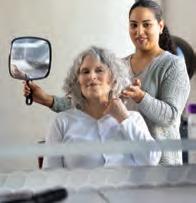











New Hampshire’s leaders in comprehensive cardiovascular care serving the entire Granite State.
New Hampshire’s leaders in comprehensive cardiovascular care serving the entire Granite State.
New Hampshire’s leaders in comprehensive cardiovascular care serving the entire Granite State.
New Hampshire’s leaders in comprehensive cardiovascular care serving the entire Granite State.
Cardi ovascular Sp e cialists of N ew England (CS N E) is dedi cated to redefini n g h ea rt and va scular care. We a re commit ted to e mp owerin g our community with timely a ccess to comp rehe nsi ve, p erso n ali zed hea rt h eal th so l utio n s from p reventi o n to ad vanced p rocedu res
Cardi ovascular Sp e cialists of N ew England (CS N E) is dedi cated to redefini n g h ea rt and va scular care. We a re commit ted to e mp owerin g our community with timely a ccess to comp rehe nsi ve, p erso n ali zed hea rt h eal th so l utio n s from p reventi o n to ad vanced p rocedu res
Cardi ovascular Sp e cialists of N ew England (CS N E) is dedi cated to redefini n g h ea rt and va scular care. We a re commit ted to e mp owerin g our community with timely a ccess to comp rehe nsi ve, p erso n ali zed hea rt h eal th so l utio n s from p reventi o n to ad vanced p rocedu res
Cardi ovascular Sp e cialists of N ew England (CS N E) is dedi cated to redefini n g h ea rt and va scular care. We a re commit ted to e mp owerin g our community with timely a ccess to comp rehe nsi ve, p erso n ali zed hea rt h eal th so l utio n s from p reventi o n to ad vanced p rocedu res
CARDIAC TESTING
CARDIAC TESTING

CARDIAC TESTING
CARDIAC TESTING
CORONARY ARTERY DISEASE INTERVENTION
CORONARY ARTERY DISEASE INTERVENTION

CORONARY ARTERY DISEASE INTERVENTION
ATRIAL FIBRILLATION TREATMENT
CORONARY ARTERY DISEASE INTERVENTION
ATRIAL FIBRILLATION TREATMENT
Monday–Friday 8:00 AM–5:00 PM
ATRIAL FIBRILLATION TREATMENT
ATRIAL FIBRILLATION TREATMENT
CONGESTIVE HEART FAILURE MANAGEMENT
CONGESTIVE HEART FAILURE MANAGEMENT
CONGESTIVE HEART FAILURE MANAGEMENT
ARRHYTHMIA/HEART RHYTHM TREATMENT
CONGESTIVE HEART FAILURE MANAGEMENT
ARRHYTHMIA/HEART RHYTHM TREATMENT
ARRHYTHMIA/HEART RHYTHM TREATMENT
HEART VALVE PROCEDURES
ARRHYTHMIA/HEART RHYTHM TREATMENT
HEART VALVE PROCEDURES
HEART VALVE PROCEDURES
HEART VALVE PROCEDURES
VEIN & VASCULAR INTERVENTION
VEIN & VASCULAR INTERVENTION
VEIN & VASCULAR INTERVENTION
CARDIAC REHABILITATION
VEIN & VASCULAR INTERVENTION
CARDIAC REHABILITATION
CARDIAC REHABILITATION
CARDIAC REHABILITATION
Same-Day and Next-Day Appointments
Same-Day and Next-Day Appointments
Hospital Affiliations Catholic Medical Center Parkland Medical Center St. Joseph’s Hospital Monday–Friday 8:00 AM–5:00 PM
Hospital Affiliations
Same-Day and Next-Day Appointments
Same-Day and Next-Day Appointments
Catholic Medical Center
Parkland Medical Center St. Joseph’s Hospital
Hospital Affiliations Catholic Medical Center Parkland Medical Center St. Joseph’s Hospital Monday–Friday 8:00 AM–5:00 PM
Hospital Affiliations Catholic Medical Center Parkland Medical Center St. Joseph’s Hospital Monday–Friday 8:00 AM–5:00 PM
603-323-0883 www.csofne.com
603-323-0883 www.csofne.com
603-323-0883 www.csofne.com
603-323-0883 www.csofne.com








Vice President/Publisher Ernesto Burden (603) 624-1442 x5117 ernestob@yankeepub.com
Editor Mike Cote (603) 624-1442 x5141 mikecote@yankeepub.com
Managing Editor Emily Heidt (603) 624-1442 x5115 eheidt@nhmagazine.com
Managing Editor, Custom Publications Sarah Pearson (603) 624-1442 x5128 sarahekp@yankeepub.com
Assistant Editor Elisa Gonzales Verdi (603) 624-1442 x5010 egonzalesverdi@nhmagazine.com
Assistant Editor Emily Reily (603) 624-1442 x5119 emilyr@yankeepub.com
Art Director John R. Goodwin (603) 624-1442 x5131 johng@yankeepub.com
Creative Services Director Jodie Hall (603) 624-1442 x5122 jodieh@yankeepub.com
Graphic Designer Christian Seyster (603) 624-1442 x5116 christians@yankeepub.com
Senior Graphic Production Artist Nicole Huot (603) 624-1442 x5116 nicoleh@yankeepub.com
Director of Business Development Jenna Pelech (603) 624-1442 x5154 jennap@yankeepub.com
Sales Executives Josh Auger (603) 624-1442 x5144 jauger@nhmagazine.com Jessica Schooley (603) 624-1442 x5143 jessicas@yankeepub.com
Operations Manager Ren Chase (603) 624-1442 x5114 renc@yankeepub.com
Sales & Events Coordinator Paul Milone (603) 624-1442 x5121 paulm@yankeepub.com
Business & Sales Coordinator Paula Veale (603) 624-1442 x5110 paulav@yankeepub.com
Digital Operations Morgen Connor (603) 624-1442 x5149 and Marketing Manager morgenc@yankeepub.com
Billing Specialist/IT Coordinator Gail Bleakley (603) 563-8111 x113 gailb@yankeepub.com
Assistant Controller Nancy Pfuntner (603) 563-8111 x138 nancyp@yankeepub.com
VP/Consumer Marketing Brook Holmberg brookh@yankeepub.com
VP/Retail Sales Sherin Pierce sherinp@yankeepub.com
250 Commercial Street, Suite 4014 Manchester, NH 03101 (603) 624-1442, fax (603) 624-1310
E-mail: editor@nhmagazine.com
Advertising: sales@nhmagazine.com
Subscription information: Subscribe online at: nhmagazine.com or email customerservice@nhmagazine.com
To order by phone call: (877) 494-2036
© 2024 Yankee Publishing, Inc.
New Hampshire Magazine® is published by Yankee Publishing, Inc., 250 Commercial Street, Suite 4014, Manchester, NH 03101, (603) 624-1442. All rights reserved. Reproduction in whole or in part without the written permission of the publisher is prohibited. The publisher assumes no responsibility for any mistakes in advertisements or editorial. Statements/ opinions expressed herein do not necessarily reflect or represent those of this publication or its officers. While every effort has been made to ensure the accuracy of the information contained in this publication, Yankee Publishing, Inc.: New Hampshire Magazine disclaims all responsibility for omissions and errors. New Hampshire Magazine is published monthly, with the exception of February and April. USPS permit number 022-604. Periodical postage paid at Manchester 031039651. Postmaster send address changes to: New Hampshire Magazine, P.O. Box 37900, Boone, IA 50037-0900

PRINTED IN NEW HAMPSHIRE


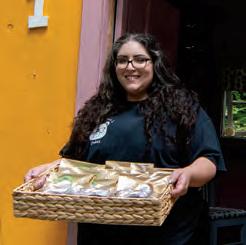
40 Bond of Sisters Rugby gives women a change to showcase their strength and tenacity. By Brion O’Connor
50 In a Pickle
The small Granite State town of Winchester has annually celebrated the pickle for a quarter of a century. But why?
By Caleb Jagoda,
Photography by Max
Schoenfeld
56 Granite State Growers
New Hampshire’s local farms are the backbone of our communities, and many of them offer unique and interesting experiences that are as fresh as their produce; with the hope that visitors will stop by and stay a while, and then keep coming back.


Volume 38, Number 7 ISSN 1532-0219
14 Fog Over Crystal Lake Autumn air fogs up the Little White Church in Easton
Photo by Michael Blanchette
16 Embracing its Roots
Dover’s waterfront revitalization project comes full circle for city and its residents By Emily Reily, Photography by Mark Bolton
22 Cookie Cravings
These New Hampshire cookie companies bake community and flavor into every bite By Kara McGrath, Photography by Brittany Grimes
28 Beyond the Saddle Adrienne Rupp’s journey into horsemanship at Covered Call Farm By Jason Schreiber
34 Blips Summer for Swifties By Casey McDermott
36 What Do You Know Bringing Back the Squirrels By Marshall Hudson
38 In Their Own Words Road Maps to the Clouds By Emily Reily
70 Putting Perfection
Swing into the end of summer by hitting the green at your local mini golf spot By Jill Armstrong
82 Calendar
Summer events around the state Compiled by Elisa Gonzales Verdi
84 Connections
Rockin’ the Embassy By Lynne Snierson
86 Health Electric Relief By Krysten Godfrey Maddocks
88 Live Free
Suddenly Last Summer By Editorial Staff
Special Advertising Sections
77 Ask the Experts: Wills & Estate Planning

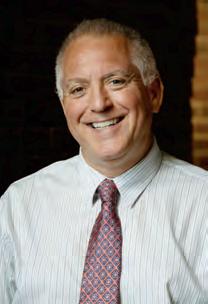
I’M NOT A JEALOUS PERSON. I can’t think of a single human with whom I would want to trade places. I learned that lesson many years ago.
Oh, but that amphibian.
Every month, I toil in this space to inspire and amuse and pitch the fine work of our amazing team of staffers and freelancers at New Hampshire Magazine.
Every month, the Newt gets more mail than I do.
After our latest issue arrives at homes and newsstands, the Newt’s inbox gets flooded with emails. Our Spot the Newt contest asks readers to find our little friend hidden in advertisements scattered throughout the magazine. One lucky winner receives a gift from a local artisan or company.
Two weeks after the August issue was published, more than 100 people had already sent in entries from nearly 60 Granite State locales.
Amherst. Anaheim. Auburn. Bedford. Belmont. Boscawen. Brookline. Campton. Center Barnstead. Chesterfield. Chichester. Concord. Deerfield. Derry. Dover. Dunbarton. Durham. East Kingston. Effingham. Epping. Epsom. Exeter. Franklin. Freedom. Fremont. Goffstown. Hampton. Henniker. Hillsborough. Hollis. Hudson. Laconia. Lisbon. Litchfield. Londonderry. Manchester. Merrimack. Milford. Mont Vernon. Moultonborough. Nashua. Newbury. Newmarket. Newport. New Durham. Pelham. Pembroke. Portsmouth. Salem. Seabrook. Somersworth. Strafford. Sunapee. Tamworth. Temple. Tuftonboro. Walpole. Whitefield. Windham.
The Newt sure does have a lot fans. And New Hampshire sure has a lot of towns.
More than a dozen other entries were sent by readers in Arizona, Connecticut, Florida, Massachusetts, North Carolina, New Jersey, New York and Vermont.
And those are just the emails.







Every month, a batch of handwritten entries show up at our offices in the Waumbec Mill building in Manchester. Readers send folded notes tucked into tiny envelopes or scrawled on the back of all manner of postcards.
Carnival Cruise Lines from Swanzey. Charlie Chaplain and Buster Keaton from Manchester. Cartoon cats quoting Mr. Rogers from Kingston. The funky ones end up pinned on the wall in my workspace.
If you didn’t see your town represented, what are you waiting for? Spot the Newt!
We recommend using a magnifying glass for faster play.
As summer winds down, tour fine farms (page 56), play a round of mini-golf (page 70), check out women’s rugby (page 40) and pucker up for a pickle fest (page 50). Celebrate the return of the sentry squirrels at Castle in the Clouds (page 36) and dig some rock ‘n’ roll vibes with Scott and Gail Huff Brown (page 84).
We’ve left a couple of things out on purpose. You can find them on your own — while you search for that pesky amphibian.



Murphy and Evelyn Bond share the August issue of New Hampshire Magazine at their home in Austin, Texas. Their father, Mark Bond, was born and raised in Derry, NH.
“As I got the most recent NH Magazine issue this past weekend in the mail, I was perusing it after dinner with my two kids,” Bond said via email. “My son Murphy immediately perked up when I asked ‘Do you want to see the lightning’?
“He got very excited to look at the picture on page 12 in the issue then proceeded to show it to his younger sister. Here they are looking at some of the other articles they found interesting after ‘seeing the lightning.’ Love getting this magazine to keep me up on all things New Hampshire.”


You will still find our hilltop hideaway at the end of the winding dirt road. Lighten your spirit as you step out of your world and into ours. Welcome to Pickity Place. Call us for dining reservations. Have a Pickity Day!

Portsmouth-based photographer Jenn Bakos took the cover for our farm feature, “Granite State Growers: Stories of Tradition and Innovation.” She loves to document and capture the special moments in life, and she specializes in food, product, lifestyle and editorial photography. Check out more of her work at jennbakosphoto.com.

Joe Klementovich specializes in environmental photography and shot a variety of photographs for this month’s feature on Granite State farmers.

Assistant Editor Emily Reily cowrote this month’s feature on Granite State farmers as well as “In Their Own Words” and about Dover in “Our Town.”
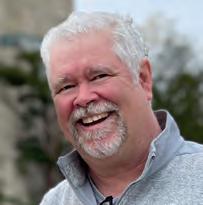
Brion O’Connor wrote this month’s rugby feature about how the sport gives women the opportunity to show off their strength and tenacity.

Former Assistant Editor Caleb Jagoda wrote this month’s feature about the Winchester Pickle Festival, which celebrated its 25th anniversary last year.

Brittany Grimes currently works as a full-time photographer in southern New Hampshire. She photographed this month’s Food & Drink story.

Assistant Editor Elisa Gonzales Verdi co-wrote this month’s feature, “Granite State Growers: Stories of Tradition and Innovation.”






























Spot four newts like the one here hidden on ads in this issue, tell us where you found them and you might win a great gift from a local artisan or company.
To enter our drawing for Spot the Newt, visit spotthenewt.com and fill out the online form. Or, send answers plus your name and mailing address to:
Spot the Newt c/o New Hampshire Magazine 250 Commercial St., Suite 4014 Manchester, NH 03101
You can also email them to newt@nhmagazine.com.
Last month’s “Spot the Newt” winner is Stephanie Jarosz of Derry. August issue newts were on pages 8, 10, 11, 34 and 99.

Need a Good Reason for Spotting The Newt?
The prize is a gift certificate for $50 to use at the shop or restaurant of our choosing. Each month’s gift card will be different, which adds to the overall Newt fun. Let the hunt begin!





“The Little White Church in Eaton, New Hampshire, sits on the shore of Crystal Lake. It’s a nondenominational, picturesque and recently-restored chapel popular for weddings and special occasions. It’s also a hot spot for photographers like me. I took this panorama after sunrise, as the morning fog embellished the scene with atmosphere amid a burst of autumn color — the combination makes for a beautiful and stereotypical New England scene.”
WORDS & PHOTO BY MICHAEL A. BLANCHETTE

BY EMILY REILY / ILLUSTRATION BY PETER NOONAN / PHOTOGRAPHY BY MARK BOLTON
On a hazy moonlit evening in Dover, music from a cover band echoes from Henry Law Park’s Rotary Pavilion Stage. Up on Central Avenue, friends and families chat and walk their dogs as cars inch down the one-way street; motorcyclists sputter loudly on this small strip.
Historical markers offer snapshots about long-ago events: Dover’s Black Day in March 1896, when a freezing flood claimed bridges and businesses; a cold day in December 1828, when workers at Cochecho Manufacturing Company staged one of the first women’s labor strikes in the United States.
Although some storefronts on Central Avenue have remained dark — the windows at Earcraft Music have been papered over for two years; and Nicole’s Hallmark store shuttered in 2019 after 31 years — downtown Dover is bustling.
On Washington Street, a bridge that crosses the Cocheco River honors legendary folk artist Tommy Makem, who laid down roots in Dover on his way to stardom. Over the bridge and close to the river, a 3.4-acre plot of land, a former zoned industrial area that housed a wastewater treatment plant and
the public works department, lays quiet as construction equipment awaits another workday.
The city is enveloped by layers of history and thriving activity, and soon a new chapter will be written: the Cochecho Waterfront Development Project, a mixeduse site first envisioned decades ago by now-Deputy City Manager Chris Parker and other proponents, is scheduled for completion in June 2026.
The project, tentatively nicknamed “the riverfront,” finally broke ground in June 2023, and construction remains steady.
In 2019, the city of Dover and the Dover Housing Authority entered into an agreement for about $3.3 million for public and private improvements with CPI Management, a business arm of private real estate developer Cathartes.
Plans for redevelopment include three mixed-use buildings, two multifamily buildings and several groups of townhouses comprising 418 residential units and about 26,000 square feet of commercial
space, according to a May 2023 story in Foster’s Daily Democrat.
In addition, there will be new streets, walkways, parking, amenities, a pavilion with “water features,” public art installations, a kayak ramp, a paddlesports dock and more.
“We’ve made excellent progress. The utility work is all complete. The shoreline stabilization is under way. We have the base supports for the roadways down, and CPI is now actively building their structure. I like to say that we are on track,” Parker says.
Since forming in 2005, volunteer members of the Waterfront Development Advisory Committee has guided development and incorporated residents’ feedback throughout the planning stages.
Donna Benton is director of planning and community development with the city of Dover.
“It’s very exciting to see this project come to fruition after decades of being talked about. I like that this
project won’t replace the downtown as Dover’s downtown has it’s distinctive charm,” Benton says.
Cliff Blake of Dover is a new member of the committee, a vice chair of the Dover Arts Commission and a member of the Dover Library board of trustees.
Speaking primarily as a Dover resident, Blake agrees the project will make use of a long-vacant spot that’s close to Central Avenue and downtown shops.
“The property across the Cocheco River from downtown Dover has been underused for decades, and this long-awaited development will add housing, retail and open space,” Blake says.
To recognize Dover’s growing arts community, Blake says a piece called “River Roots,” a 16-foot high, 13-foot-wide art installation that conceptualizes a boat that’s kept afloat by tree trunks, or roots, will be placed overlooking the river near the future pavilion building.
“The Cochecho Waterfront project will be a wonderful capstone in this vibrant city,” Blake adds.
Using riverfronts for public works rather than restaurants was “just the sort of thing you did in the ‘40s and ‘50s,” Parker says.
The idea further gained traction in the ‘90s, when it became clear that having an industrial zone right next to a river no longer made sense.
Various civic groups as well as Parker began to push the concept that the area would work better as an “extension of downtown,” Parker says.
Another advocate, George Maglaras of Dover, a Strafford County commissioner and former Dover mayor, is owner of Castaways Boathouse and George’s Marina, both on Cochecho Street.
Inside the marina, a brick building (and former coal-gasification plant) filled with marine supplies, hidden antique treasures, and rentals for boat slips, Maglaras reflected on Dover’s transformation. He was born and raised on this street.
“We used to park school buses for the city on the waterfront site,” says Maglaras, who has led several programs on Dover’s maritime history.
Maglaras says during the Industrial Revolution, before the DPW and wastewater treatment plant called this home, this was Dover’s downtown. Its proximity to
the Cochecho River made Cocheco Street and the surrounding area a prime spot for industrialization.
“Before we had trains, cars and automobiles, everything came to Dover by ship. The waterfront was the main source,” Maglaras says.
Eventually, Dover’s cotton mills gave way to shoe shops and the manufacturing of airplane components, supplies for World War II, and later, electronics components. Byproducts formed during the manufacture of some of these components were often dumped into the Cocheco, polluting it heavily, Maglaras says.
“Cornell University in the 1960s considered the Cocheco River one of the top 10 most polluted rivers in the United States,” says Maglaras of Cocheco Street.
“It wasn’t really a marina like it is today. It was just more or less a spot where everybody was friends and family members could tie up boats. In the last 50 years, it’s changed dramatically,” Maglaras adds.
The Clean Water Act of 1972 paved the way for a healthier river.
“The first discussion of doing the waterfront took place during the urban renewal days in the late 1960s, early 1970s,” Maglaras says
After zoning regulations changed in 1984, talks began again for future revitalization. But plans continued to be delayed. The 2008 financial crisis and economic downturn didn’t help either.
“It’s been delayed for, oh man, 30 years or more. Goes back a long, long time. It took a lot of changes in attitude,” Maglaras says.
Maglaras has been of the strongest advocates for redeveloping the waterfront site, Parker says.
“George has long had a vision for what the area could look like and has been a very strong proponent for bringing vibrancy to the whole area,” he says.
Renewing the city’s vibrancy Dover is known regionally for its seasonal

events, including Apple Harvest Day, which draws about 60,000 people annually. Parker says it’s possible that some of that activity could extend beyond Central Avenue and Henry Law Park.
“We did a public call early in the design process to see what people would like to see. And one of the things was food trucks and craft fairs and things that really bring the community to the park. We do anticipate that Apple Harvest Day, or some of the other downtown activities, could migrate down there,” Parker says.
On the eve of Independence Day, where Cocheco Street hugs a bend in the river, live music from Castaways Boathouse dances over the gently moving tidal water. Tourists and locals chatter and share drinks as recreational boats line one side.
Randy Kilty, who leases Castaways from Maglaras, says on a busy day, the pub can see anywhere from 300 to 400 guests.
Like Maglaras, Kilty remembers downtown Dover’s decline.
“Twenty years ago, there were a bunch of downtown shops,” Kilty says. “They all they closed one by one, and the last four years, so


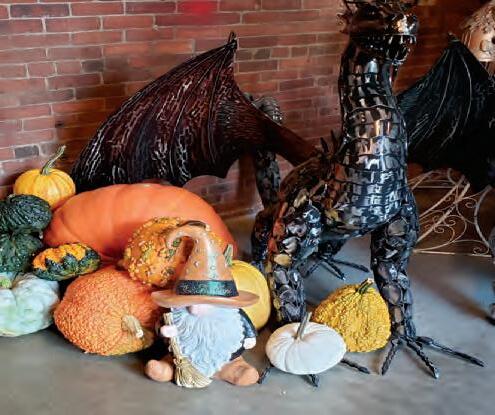



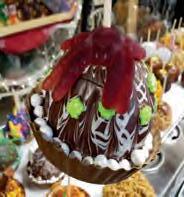



many new shops have opened downtown. There’s a revitalization down there. There’s excitement again.”
Kilty says in 2005, Castaways would close up at 9:30 every night. These days, Castaways, which directly faces the future of the riverfront’s development, is a bundle of energy by the water.
With the revitalization project finally coming to fruition, Kilty expects an uptick in business.
The project’s close proximity to Central Avenue — including Henry Law Park, City Hall, and the more traditional Central Avenue, which crosses the Cocheco — along with new housing developments, will strengthen Dover’s reputation as a burgeoning walk-able city.
“(Residents are) going to have the kayak and canoe launch; families can go down there and picnic along the river,” Kilty says.
“I love the project. It’s brilliant. They’re doing everything the right way,” Kilty says.
The mills on Washington Street, across from the Makem Bridge, house more small businesses, which further increases interest in Dover.
“If you can walk here, you’re going to see an uptick in business. Every downtown restaurant will see an uptick,” Kilty says.
Steve Frank of Dover, who had owned Photosmith, a camera store at 263 Central Ave., for 43 years, says they’ve remained afloat through many of Dover’s iterations, but adds that small businesses still have an uphill battle.
“You never have enough business if you’re in retail, because today you’re super busy, and tomorrow, you know, you might not be, “Frank says. “Yes, we have a good business. But you need a good business lots of days a week, not once in a while.”
The ups and downs of the waterfront project haven’t escaped his attention.
“You think, ‘Oh, this one is going to take off,’ and then it doesn’t take off. It’s just been a roller coaster,” Frank says.
But Frank also feels that those involved in its planning and development have Dover’s heart in mind.
“I know they’re really good people, and they’re people who believe in Dover,” Frank says. “They’re old Dover residents, and they feel like it’s really a good thing. They’ve put
in a lot of effort towards the riverfront.”
For example, Frank says Dana Lynch, a member of the Cochecho Waterfront Development Advisory Committee, has worked “tirelessly” on the project.
“Dana is a Dover guy. Just knowing the kind of person he is, I would say, if Dana believes in it, I think it’s probably a vision worth looking at,” Frank says.
Rachel Blonigen of Epping, a secretary in the city’s planning office, has worked in the city for about eight years.
She’s also a mom to two kids who liked the original skate park on River Street in Dover.
That park, which has been closed for several months due to the waterfront project, has since been relocated to a formerly undeveloped part of Guppey Park on Portland Avenue.
“I feel like it was an untapped unused space. Plus, it’s so close to downtown,” Blonigen says. “It gives people another option.”
“This project is an example that good things come with time and patience,” says Benton. NH



“I moved (to NH) and said, ‘OK, my life cannot just be 12-hour days of work.’”
BY KARA MCGRATH / PHOTOGRAPHY BY BRITTANY GRIMES
The humble chocolate chip cookie is having a bit of a moment: According to one report by market research firm Data Intelo, the global chocolate chip cookie market is projected to reach over $30 billion by 2032. In New Hampshire, a handful of new cookie-focused bakeries aim to tap into that demand — and satisfy even funkier flavor cravings. Here are three places that will make your sweet tooth sing.
Just about a mile and a half off Route 10 in Sullivan, you’ll find a little yellow cabin with crooked windows, an off-kilter roof, and the word COOKIES spelled out in giant white letters over the pink door. Inside, rather than a Hansel and Gretel-style trap, you’ll find piles of palm-sized stuffed cookies that the owner of Mama Bear’s Cookies, Bianca Alicea, calls “overindulgent.” In fact, she’s yet to meet someone who can finish a cookie in one sitting.
Although Alicea always stocks fan favorites like dark chocolate peanut butter and lemon blueberry, the cottage also has four new flavors on the menu every week.
“I’m part Italian and part Latina,” Alicea says. “(I throw in) those influences along with something that may be a familiar
flavor profile.” For instance, her Italian side influenced her decision to make a pistachio and cherry cookie (stuffed with caramel for a modern twist). Her Latina side was responsible for the churro-inspired cookie that comes with a chocolate or caramel dipping sauce.
The name Mama Bear also comes from Alicea’s personal life. She got into the cookie-making business after selling her jewelry business in Rhode Island and moving to New Hampshire for a slower pace of life in 2019.
“I was exceptionally successful in Rhode Island. I am extremely grateful for that,” Alicea says. “I moved (to NH) and said, ‘OK, my life cannot just be 12-hour days of work.’ ”
With their now-adult son out of the house, Alicea and her husband decided to start fostering children. “It’s hard. The kids want to call you mama or mommy,” she says. “You want to set that boundary: They have a mom and are just with us for a little bit.” It was Alicea’s husband who came up with the phrase Mama Bear as an alternative title.
Now, fostering and the cookie cottage are Alicea’s full-time focuses, and a portion of each sale is donated to Feeding Tiny Tummies, a nonprofit that provides meals to children in need. She also donates physical product to the group, especially during the holidays. “Come Christmas time, we donated a hundred cookies in total,” Alicea says. “We wanted to make sure that the kids had cookies to give Santa.” Facebook


“I’m more than happy to give back to these families because I wouldn’t want my daughter to go without.”


Before opening Maddi Hatter Cookie Company in 2022, Sarah Guinther spent 20 years as a microbiologist. Her science background has helped her develop cookie recipes that, on paper, might sound a little too funky. “I’m very, very precise,” Guinther says, noting that some of the 42 flavors she offers — like salted maple chocolate or cream cheese blueberry — just wouldn’t work. “If (the recipe) is off just a little bit, it’ll be funky.”
Guinther’s cookies are decadent, often finished with unexpected toppings and almost always involve a generous helping of frosting. She sells them out of her house in Bow where, with the help of a dual oven, she says she can make five dozen cookies in an hour. Guinther is a one-woman show, apart from her 8-year-old daughter, Madeline (the company’s namesake), who is just learning how to make chocolate chip cookies — Maddi Hatter’s most popular flavor.
Giving back to the community has been a core part of the Maddi Hatter’s business model since the start: Since Maddi Hatter is Guinther’s side gig, she donates all the proceeds from her cookie sales to the foster care system, prioritizing giving to “de-privatized companies, like Bridges.”
“There was once upon a time where I was so poor that I was eating a pizza a day, and I didn’t know if I was going to have a meal the next day,” she recalls. Now that she’s in a better situation, she hopes to help others. On top of donating all her proceeds, she’ll often offer cookies at a discounted price or completely gratis for children’s birthday parties. “Times are tough for everyone. A lot of people are losing jobs,” she says. “I’m more than happy to give back to these families, because I wouldn’t want my daughter to go without.”
While Guinther has dreams of expanding to an Alice in Wonderland-themed brick and mortar, currently you can buy Guinther’s cookies (including her “charcookerie boards,” which include a half or full dozen cookies and a hand-carved wooden board that can be customized for each order) from her website, to be picked up, shipped, or, in certain circumstances, hand-delivered by Guinther. “Whatever you, as the customer, prefer, that’s what I do.” maddihattercookiecompany.com
“We pack as much flavor into that cookie as we can without using stuffing or frosting.”

When Ben and Sarah Brinson first launched BenjeeS Cookies in 2014, it was with a single cookie flavor: potato chip. “We found a recipe in a very old magazine for potato chip cookies (that) sounded really interesting,” Sarah — who is the PR arm of BenjeeS while Ben brings the baking expertise — says. “We spent two full years really working on that recipe and making it what we imagined it could be.”
The couple sold those potato chip cookies successfully for a year before Ben injured his elbow. “That injury took him out,” Sarah says. “He never recovered from that injury and received several diagnoses for chronic illnesses because of that injury.” They put their cookie company dreams

on hold but, according to Sarah, Ben never stopped talking about it. So, in 2023, Sarah left her job of 10 years and told him he had six months to get the company running again. When they relaunched later that year, things were different: “We went hard with it. Last year in August, we hit the ground with 18 flavors.”
Sarah and Ben call their product “smash cookies;” they’re thin and chewy with crunchy edges. “We pack as much flavor into that cookie as we can without using stuffing or frosting,” Sarah says. Though the potato chip cookie — a cookie made entirely out of potato chips, not one with some chips mixed in — remains their top seller, other flavors have become fan favorites. At the farmer’s markets, Sarah says the most popular flavors include M&M (“mostly because of the kids”), maple bacon molasses, double chocolate cherry, sweet curry and cardamom, and lemon basil.
Ben has been in the food business for decades, including training under a French baker in Nashua. Still, developing flavors is a joint endeavor, with Sarah often suggesting the initial idea based on something she’s seen online or flavors she’s craving. Ben then refines the idea into something unique to BenjeeS, often taking months to develop the perfect new flavor. Take their coconut macaron, for example. “I wanted a macaron so badly,” Sarah says. Instead of going the classic coconut-and-milk-chocolate route, Ben decided to add pineapple and white chocolate.
Currently, you can buy the cookies at two farmers markets (Peterborough and Jaffrey) and a stand on Main Street in Keene on Thursdays and Saturdays. “We’ll be out there until it gets cold, usually the first week in November.”
Customers can also order online for front porch pickup from their house in Keene or for two-day shipping across the country. The dream, Sarah says, is to open up a cookie cafe, specifically one that would be a safe space for all ages, as a nod to the cafes and restaurants where Sarah says, “I would buy a five-dollar French fry for a group of eight teenagers and they would let us sit there for three hours” after school.
The Brinsons hope this cookie cafe would be a place “where people can walk in and get all 18 flavors and all of the different milks and sit and really just kind of break into their lost childhood.”
benjeescookiesnh.com NH
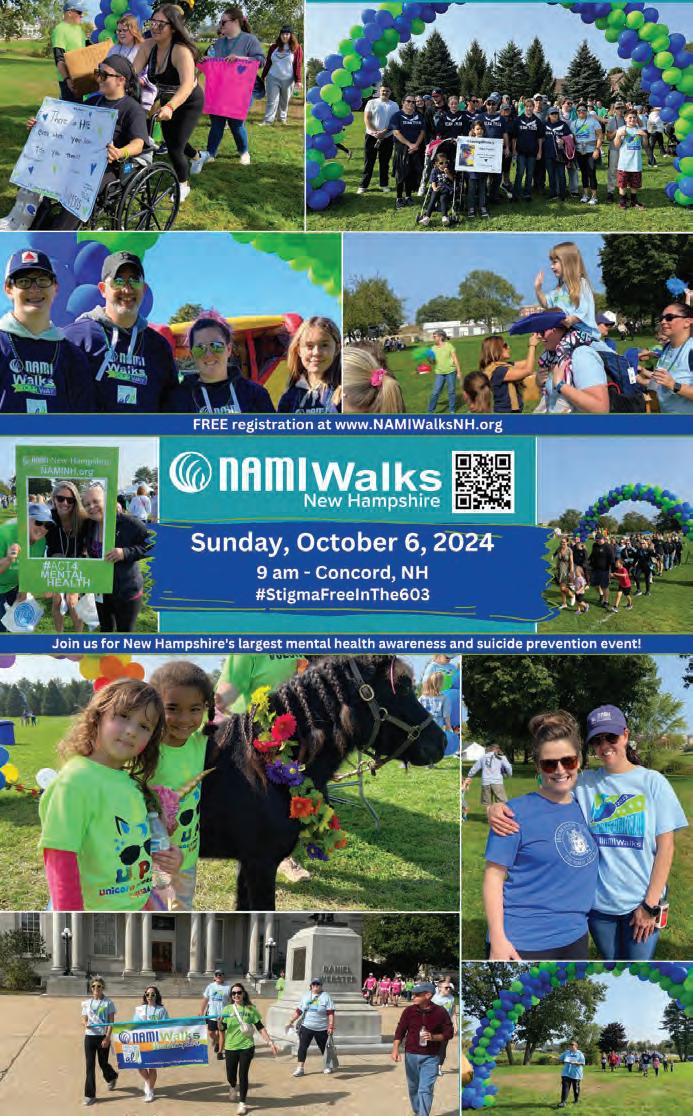
Each week, on the Down To Business podcast, NH Business Review’s editors and writers analyze the most important news affecting business in New Hampshire, drawing on first-hand reporting to provide the most timely, insightful and actionable business news analysis in NH.
LISTEN FOR FREE WHEREVER YOU GET YOUR PODCASTS.


Adrienne Rupp was a late bloomer of horsemanship
STORY & PHOTOGRAPHY
BY JASON SCHREIBER
Adrienne Rupp always had a passion for horses and dreamed of owning a horse farm, but as a child she never had an opportunity to take riding lessons or learn more about these majestic animals.
Unlike many horse lovers whose equestrian journeys began at a young age, the 47-year-old Rupp didn’t learn to ride until she was 20, took a break after the birth of her first daughter, and picked it up again in her early 30s.
She’s been focused on horses ever since. Her desire to one day run a horse farm became a reality in 2020 after she bought a 5 acre property in Lee, built barns, a riding ring and named it Covered Call Farm.
Now, Rupp is on a mission to provide a hands-on and enriching equestrian experience to others through a new horsemanship foundational training and education program offered at her farm at 64 Harvey Mill Road. She’s teamed up with KT Horsemanship founder and owner Kati Turcotte, a partnershipfocused, natural horsemanship coach and instructor from Northwood.
The new program is unique in that it doesn’t actually offer riding lessons, which remain in high demand with waitlists at many farms. Instead, this non-riding program for participants ages 10 years and older offers a chance to learn everything they ever wanted to know about horses and it allows them to interact and build
Covered Call Farm owner Adrienne Rupp with her horse, Clyde, outside a barn on her 5 acres in Lee, where she’s launching a horsemanship foundational training and education program.
relationships with the animals.
Rupp approached Turcotte a year ago to see if they could partner on a program for children and adults interested in learning about horses. They say many who are new to riding often don’t realize that there’s so much more involved with horsemanship.
“You learn how to ride a horse, but you don’t necessarily learn all the other stuff that goes into being around horses, being a horsemanship person, caring for them, feeding them, recognizing when they’re sick. They’re animals in their own right, and they have feelings and they have needs. I think, at least when I started out, you don’t necessarily appreciate that right off the bat,” says Rupp, who owns four horses and boards two
“You don’t just get to show up and hop on. You really are doing a disservice to yourself and the animal if you do that.”
— Kati Turcotte
additional horses at her farm.
To many people, horses almost seem mechanical as they perform certain movements for their owner or rider, but Rupp said it’s important to remember that they’re living, breathing animals, and there’s a reason they respond the way they do and are trained a certain way.
“I think when you think about horses, the first thing that comes to mind is that you ride them. In my case and for a lot of people, if you don’t grow up in that environment, you don’t really know what else you would do with them. You can drive them, you can do just ground work, there’s liberty work, there’s trail, there’s horse agility and just being with them,” she says.
Turcotte, who’s been around horses her entire life and has owned her own facility for nearly 25 years, served as Rupp’s riding instructor for many years and understands what’s involved in riding, owning and caring for a horse.
“Some people want to just learn how to




ride, but we feel that’s a little disrespectful to the horse. Being able to ride the horse is the reward. You don’t just get to show up and hop on. You really are doing a disservice to yourself and the animal if you do that. Unfortunately, a lot of programs do that because that’s the ‘ooh and ahh’ factor. That’s the sparkle effect that gets people to show up and pay,” Turcotte recalls.
The program is geared toward those with little to no prior horsemanship experience, or others who may be seeking an alternative to past horsemanship experience. It includes six, 90-minute classes offered weekly that will teach an understanding of horse and herd behavior; basic horse care; ways in which horses and humans read and respond to energy and body language; horse handling and grooming; biomechanics of horse and rider; fitness; groundwork; and fashion and accessories for horses and humans.
“You can get anything online these days, but there’s not a physical place you can go to do hands-on work like learning how to wrap a horse’s leg, learning how to dress a wound, learning the different tack and the different anatomy of a horse, and be able to touch, and smell and see all of those things,” Turcotte says. “You can get all the information you want on the internet, but it means a little bit more when you’re hearing from a human being that has actually experienced it and to be at a farm and to see the horses and do all these things, the information kind of sticks a little bit more.”
While it’s not a therapeutic program, Rupp is pursuing her master’s degree in clinical mental health counseling and is exploring other opportunities for her farm, which she envisions could someday offer equine-assisted therapy.
Turcotte hopes that those involved in rescue organizations may take advantage of the program to gain a better understanding of horses. She said she would also like to be able to network with other riding facilities to broaden their knowledge through the program.
From a hobby to a lifestyle, Rupp sees this new venture as a way to share her passion with others and instill a deeper appreciation for the way in which horses and humans connect.
“They’ve done so much for me,” she said. “I just think they’re wonderful animals.”
For more information on the program, visit coveredcallfarmnh.com. NH

Ingredients:
2 parts Jim Beam Black
1 part lemon Juice
½ part lemon-lime soda
½ teaspoon sugar
Garnish:
Lemon peel
Mix Jim Beam Black Bourbon with lemon juice, sugar and ice in a shaker. Shake vigorously and strain into whiskey sour glass. Garnish with a lemon peel.


Ingredients:
1 part Jim Beam White Bourbon
½ pint pale ale
1 part ginger syrup
Dash of lemon-lime soda
Garnish: Lemon wheel
Combine all ingredients on the rocks in a pint glass.

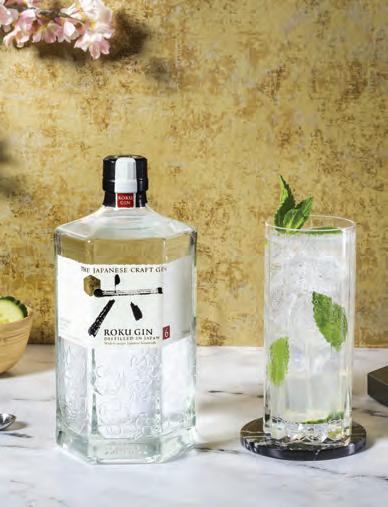
Ingredients:
2 parts Roku gin
½ part Elderflower liqueur
½ part fresh squeezed lemon juice
½ part simple syrup
Soda water, to top
Garnish:
3–5 mint leaves
2–3 cucumber slices
In a Collins glass, gently muddle the mint, cucumber, and simple syrup. Add the gin, elderflower, lemon juice, and a small bit of ice and gently stir to combine. Fill the glass with ice and then top with soda, giving another gentle stir to combine. Garnish with a mint sprig and cucumber wheel.


Ingredients:
2 parts Maker's Mark 46
¾ part orange liqueur
6 fresh mint leaves
½ lemon, cut into wedges
½ peach, pitted and diced
1 teaspoon simple syrup
Garnish:
Mint sprig
In a shaker, muddle the mint leaves, lemon, peach and simple syrup. Add the bourbon and orange liqueur, ice, and shake until well chilled. Strain into an Old-Fashioned glass filled with crushed ice. Garnish with a sprig of fresh mint.
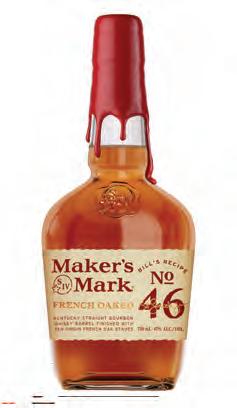

Ingredients:
1 part Knob Creek Kenturcky Straight Bourbon Whiskey
1 part Luxardo Maraschino Liqueur
½ part Punt e Mes
¼ part fresh lemon juice
Garnish:
Luxardo cherries on skewer
Combine Knob Creek, Luxardo Maraschino, Punt e Mes and fresh lemon juice in a glass. Stir and strain. Garnish and serve in a chilled coupe glass.
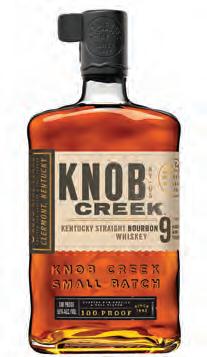

Ingredients:
1½ parts Basil Hayden Kentucky Straight Bourbon Whiskey
¾ part fresh orange juice
¾ part pomegranate juice
1 tablespoon simple syrup
Garnish:
Orange slice or peel and pomegranate seeds
Combine all ingredients in a cocktail shaker over ice. Shake and strain into a tumbler. Serve over ice. Garnish with fresh orange slice or peel, pomegranate seeds.


“I try as much as possible to make this something that has high integrity and is by a Swiftie, for Swifties.”
A Maine singer has become a big attraction performing at Canobie Lake Park with Taylor Swift tribute
BY CASEY McDERMOTT
Growing up in rural Maine, June Baker didn’t get a chance to see many big-name pop stars perform in person. One of her first concerts was a tribute to the Backstreet Boys and Britney Spears, but it might as well have been the real thing.
“That was really special for me,” she says. Call it “The Prophecy,” an “Invisible String” or a dose of good “Karma” — but a few decades later, Baker’s now the one making the “Wildest Dreams” of adoring Swifties come to life. Her star turn in this summer’s Tribute to the Music of Taylor at Canobie Lake Park in Salem has gone viral, thanks both to her uncanny resemblance to the superstar songstress and her laser-like precision in channeling Swift’s on-stage persona.
She’s still getting used to navigating the newfound media spotlight, but she’s been especially grateful to bring a little bit of Swift’s multiyear, multicontinent Eras tour to fans who might not otherwise be able to attend.
“It’s an honor to share that with, especially the kids,” she says. “Because (some of them say) like, ‘This is my first concert!’ And I’m like, ‘My first concert was a tribute show, too!’ It’s so cool. It’s been overwhelmingly wonderful.”
This chapter in Baker’s life was much more than a fortnight in the making. After leaving a job in health care a few years ago, she started turning to social media as an outlet for creative expression. Her interests

in performance art and fantasy eventually found a home in a character she embodied online, named Princess Juniper. As her following grew, so did a common refrain:
“You look a lot like Taylor Swift.”
She started dabbling in more Swiftinspired content, and was recruited by a producer for Canobie Lake Park, who worked with her to develop the tribute show. It helped that she lives in northern New England, close enough to commute without uprooting her life for the summer.
“I really do see this as like an acting gig, like a performance gig,” says Baker, who does all of her own singing and dancing live for the tribute show, and even made one of her own costumes.
“And I try as much as possible to make this something that has high integrity and is by a Swiftie, for Swifties, but also for the general audience.”
When she’s not on stage, Baker spends plenty of time following the latest songs and concert videos from Swift. (Her favorite albums are “folklore” and “evermore,” but she’s learned to love some of the bigger radio hits while performing those during her 26-minute Canobie Lake Park set.)
But it’s not her entire personality.
“My husband and I are both certified in both scuba- and skydiving, love yoga, hiking with our two dogs, sailing and travel in general,” she added.
She’s still figuring out what the next chapter might have in store after her tribute show wraps up. But for now, she says, she’s just trying to remember this moment. NH


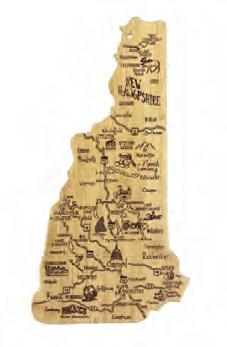
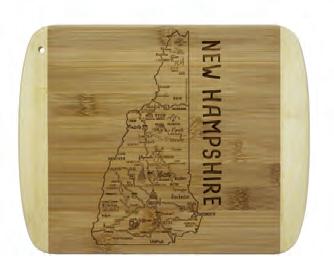
STORY & PHOTOS BY MARSHALL HUDSON

I’m up on the roof admiring the view from this usually off-limits vantage point.
To the southwest, I see the blue shimmering water of Lake Winnipesaukee broken up by a multitude of wooded islands. To the northeast are the isolated Ossipee Mountains with their pitch pine barrens and scrub oak woodlands, which provide a colorful autumn display.
Ask anyone who has ever visited the Castle in the Clouds in Moultonborough, and they will likely speak fondly of these million-dollar views. The scenery gets even better when observed from high atop the castle’s roof. But I’m not up here to admire the view, I’m looking for squirrels. I’m not just looking for any squirrels, I’m looking for some elderly ones that wandered off and are returning today.
The squirrels were installed as a decorative finial on this roof about 1914. After nearly a century of sentry duty, they suddenly vanished. Today, I’m working alongside a restoration team intent on bringing them back. Historic black-andwhite photographs show these old squirrels perched on the peak of the castle’s turret roof, located at the end of a pergola-covered walkway. But there are no records revealing why they are there. Perhaps it was done
on a whim by Thomas Plant, the eccentric millionaire who built this retirement home he called “Lucknow,” now known as Castle in the Clouds.
Thomas Plant was born in Bath, Maine, in 1859 to French Canadian immigrants and was forced to leave school at the age of 14 to help support his family. Plant took a job as an apprentice in a shoe factory. An ambitious young man with talent and drive, Plant quickly rose from laborer to factory
owner in only 11 years. He went on to establish his own company, and by 1910, his factory in Jamaica Plain, Massachusetts, was the largest shoe factory in the world. That same year, at the age of 51, Plant sold his business to the United Shoe Machinery Company and started making his retirement plans.
Plant retired to the Ossipee Mountains and began buying up land to build his dream home. He bought a small hotel and the surrounding acreage, followed by adjoining farms, an observation area called the “Crow’s Nest,” and a variety of other lodges, buildings and vacant land. He raised the structures on these acquisitions, and in 1913-1914, Thomas Plant and his wife, Olive, built their unique estate. They oversaw the construction of a 16-room granite veneer mansion with a horse stable, six-car garage, two gatehouses, a greenhouse, a manmade lake, a golf course and a tennis court. The estate eventually included 6,300 acres with 2 miles of lake frontage and a boat house on Lake Winnipesaukee.
For many years, Thomas and Olive Plant enjoyed a luxurious lifestyle at Lucknow with their large staff of caretakers, and the home’s state-of-the-art amenities, which included a central vacuum, ammonia-brine refrigerator and a house-wide interphone system. But by the early 1920s, due to a downturn in



the economy, some bad investments and a habit of overpaying for their desired things, the Plants were no longer financially able to continue their lifestyle.
The Lucknow estate was mortgaged to a friend who allowed the Plants to continue to live there until Thomas’s death. The estate then went into foreclosure, and Olive returned to Illinois to live with her family. In 1956, the estate was sold to Mr. Richard Robie, who opened it as a tourist attraction and changed the name to Castle in the Clouds.
Since 2006, the castle has been owned and operated by the Castle Preservation Society, a private nonprofit corporation that opens it seasonally to the public. In 2017, the Preservation Society began restoring the covered walkway known as “the pergola” that leads from the driveway to the lakeside lawn. This pergola was in rough shape. Water damage and wood rot were wreaking havoc on the posts, beams, braces and decorative rafter tails. The clay tile roof needed replacing, and the historic squirrels had gone missing.
Preservation carpenters replaced only what was absolutely necessary with the goal of retaining as much of the original struc-
ture as possible. New white oak timbers were spliced onto the original ones using specialized joinery techniques. All finished surfaces were further shaped with hand chisels to resemble the scalloping on the original woodwork. New copper flashing was attached to the tops of the rafter tails to divert rainwater and prevent further rot.
Replacing the clay tile shingles on the pergola posed a challenge because the bellshaped roof curves in multiple directions simultaneously. Also, as each course or ring of tiles proceeds up the circular roof, a smaller shingle with a tighter radius is required. Every tile had to be individually crafted and numbered for installation in a designated spot on the turret roof.
A chainsaw artist in Pennsylvania was commissioned to carve three new squirrels out of white oak stumps, which was chosen for its natural, rot-resistant durability. Each squirrel stands about a foot and a half tall and appears to be holding an acorn. The squirrel carvings were shipped to New Hampshire, where a building restoration company, also carving with a chainsaw, created the finial pedestal that unites the squirrels and anchors them to the roof.
The roofing contractor invited me onto the roof as the clay tiles went down and the squirrels went up. I climbed the scaffolding, secured a safety harness and assisted with photo-documenting the restoration work.
When the last of the tiles were set in place, the replacement squirrels were hoisted onto the roof and installed at their prime viewing spot looking out over the castle grounds. The scaffolding came down, and my rooftop vantage point became off-limits once again.
If you visit the castle, you’ll have to enjoy the views from the ground, but don’t just gaze out at the mountains and lake, turn around and check out the squirrels guarding the castle from high atop the pergola roof. NH


There’s a sign high on the wall inside George Brown’s woodshop at Pinkham Notch Visitor Center that reads “grand juction.”
After 10 years and roughly 600 signs, the missing "n" is simply a reminder for Brown, a member of the Appalachian Mountain Club and official “Sign Maker,” to take his time when carving out the newest directional signs that line New Hampshire’s trails and which keep hikers on the right track.
Brown, along with AMC staff and volunteers, helps maintain about 440 miles of trails in White Mountain National Forest — about 750 trail signs in all. When current signs wear out their welcome, become difficult to read, splinter or get chewed by bears or porcupines, staff and volunteers will note its ID number on its reverse and add it to a continuously updated database. That’s where Brown comes in.
Using a premeasured, pretreated white pine board sourced locally, Brown uses a “signmaking machine” — “I’m sure there’s a fancier name,” he says (it's a Marlin 3-D Carving Machine) — to make a tiny mark in the wood for character placement. Then the machine helps him carve each character
using standardized letters in plastic molds.
After chiseling the message, he squeezes a bit of ordinary house paint — chrome green to be exact — into the grooves, then uses the handle end of a small paintbrush to spread the paint and fill in the carved letters. The rest of the sign receives house paint in white.
Retired signs are returned to the woodshop; each year a few are auctioned off, some for a handsome price.
Here’s an inside look at Brown’s craft.
New Hampshire Magazine: I think it’s always a relief to see one of your signs — then you know you’re in the right place.
George Brown: I look at it like it’s an adventure. And it’s like a discovery as you hike along. And I think when people come to a junction with a sign, it kind of confirms “Oh, yeah, we’re in the right place, at the right time, we hope.”
NHM: I didn’t realize each sign is numbered. GB: That’s the actual sign number in the database. There are so many things about trail work that people take for granted — signs being one of them. There’s just a lot of cleaning drainage, building rock walls, brushing
the trail and blazing it. A lot of people just don't know. I can't fault them.
NHM: How long does it take to make one sign from start to finish for you?
GB: Well, of course, it depends on the number of lines but on average, I would say between an hour and a half to two hours, and that includes layout, which is quite time-consuming. But then you got to spend time putting it together. Sanding it, painting it. And painting the letters, as you can see, is the most time-consuming, because it's so fine.
NHM: How many coats of paint do they get?
GB: The white is three (coats). One prime, two finish. And the green is just one coat. We always buy top-quality paint, because we don't want to do those letters twice. Once is enough.
NHM: These signs seem very consistent. Who came up with this style?
GB: These standards come from the owner of the White Mountain National Forest, which is the United States Forest Service. Most of the time making a sign is spent

laying it out to make sure the trail name gets centered and that the text is all the way to the left and right like it’s supposed to be.
NHM: Do the distances on the signs ever need to be adjusted?
GB: Whenever I make a sign, I refer to the White Mountain Guide. You’ve seen that big thick volume? It tells me exactly where this sign is. I'll look in the guide and make sure the distance is correct. Chances are, in fact, if you see any sign that is this thickness — five-quarter inch — it was one that I made.
NHM: How often are the signs replaced?
GB: I'm guessing 10 years, maximum 15. Ones that are in a somewhat sheltered location — this one is right around Lincoln Woods — this one will probably last 12 to 15 years, I bet.

NHM: What happens to the old, wornout signs?
GB: Every year, the AMC Trails Department will auction these off. It’s kind of fun to watch it. Someone paid like $1,800 last year (for one). I bet this one will get close to, if not more than, $1,800, because it was in the alpine zone. Anything that is above treeline and gets exposed to that kind of weather, which can be horrific, (is more valuable).
NHM: How long will you continue to do this?
GB: As long as I can, as long as they want me to. I really enjoy it. It’s a great job. There’s always a challenge, but you do have to think through laying things out and spacing and checking the text to make sure it's accurate.
NHM: Do you ever get bored with this job?
GB: No, it’s a fun gig. I get to work here at

Pinkham. ... And it’s a great community here of staff that you get to know pretty well. I've got two golden retrievers, and they've got many friends here that come in and say hi.
NHM: I came across a picture of you hiking, and you had a new sign in your backpack. Do you always replace them?
GB: No, I used to put some up. But my knees really started bothering me lately. It's just real hard for me to get there, and I miss it horribly. There's a seasonal staff person who puts signs up, but he also has a team of volunteers that puts signs up and also help with the inventory and assess trail conditions.
NHM: Do you still go hiking?
GB: I do. I maintain the trail over in Evans Notch. I call it the undiscovered gem of the White Mountain National Forest. I look after the lower part of Royce Trail — the first mile follows a cold river stream. And of course, the dogs love it.
NHM: That trail’s not too difficult?
GB: I was done by the end of the day. Because there’s a 2,000-foot elevation gain. So yeah, I still get out there, but I can't do the 4,000-footers. I was on Emerald Bluff, a 2.4 mile hike along Israel Ridge Trail and Emerald Trail, a couple years ago, and I came to this beautiful outlook of Castle Ravine. And I had this real deep sense of remorse that I can't do this anymore. And yet, right after that I said, “You know what, I feel just great that I was able to, that I can say that I did that.” NH


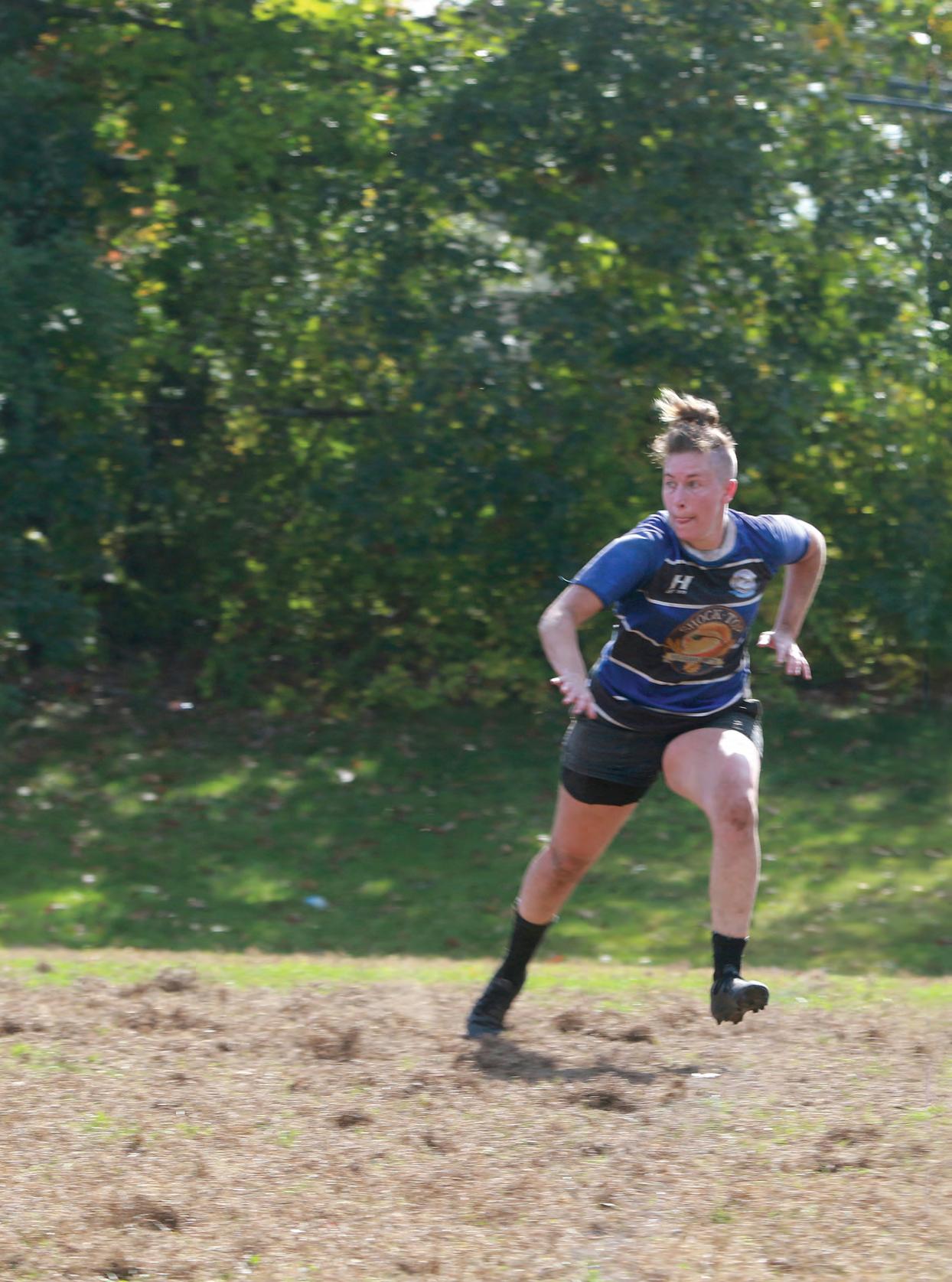
By Brion O'Connor
n any given Saturday each fall, rain or shine, dozens of women gather on Granite State playing fields to do battle. They may differ in size, age, and physical gifts, but every one of them is as tough as nails.
That's a nonnegotitable trait to play rugby.
“Rugby is not for the faint of heart,” says Nottingham’s Kerry Folkins, 45, who plays for Great Bay Rugby/Seacoast Women’s Rugby, and is the corporate engagement director for the Greater Seacoast Region of Granite United Way.
“It’s a badass sport that requires a tough mental fortitude and the ability to embrace fear," Folkins says.
Rugby, as both a sport and a community among men and women — as well as youth and old-timer programs (see sidebar) —
is flourishing in New Hampshire. The reasons are myriad.
“I cannot emphasize enough how special the rugby community is, and I want to emphasize how important it is to me as a woman,” says Vanessa “V” Burton of Manchester, who plays for Amoskeag Rugby Club. “There’s this societal expectation and pressure about how women should behave. Women are supposed to be quiet, delicate, thin and pretty, and fit this mold or standard of appearance and behavior. In rugby, all those expectations are challenged.
“You can be big and loud and strong and fierce, and not only are you accepted for it, but you are celebrated,” says Burton, 29, an assistant director of student accounts at Southern New Hampshire University. “Beyond that, you don’t have to fit any gender mold to fit in to rugby. You can be gay, queer, nonbinary or any gender
identity and the rugby community will accept you for who you are.”
For the uninitiated, a rugby match looks like controlled, or barely controlled, mayhem, with adult women thumping into each other at full gallop. That kind of “interaction” between the 30 athletes — 15 a side — can lead to a spike in emotional temperatures. Ask any player what the attraction is, and invariably, one word bubbles to the surface: passion.
“Rugby is such a passionate sport, and people that play, have played, or are some part of the community feel deeply about it,” Burton says. “I think a lot of the passion does come from the contact of the sport. In every game, we are literally putting our bodies on the line for our teammates. Our bodies are tight together during every scrum. We physically protect the ball and protect each other, and we have to rely on our teammates to do the same.”


Similarly, Lily Pudlo of Dover, 24, who plays for Seacoast Rugby, says: “The physicality inspires a lot of passion. You can’t, for lack of a better term, half-ass rugby.”
“For one thing, you’ll hurt yourself if you don’t commit to your tackles or stand your ground in a ruck,” says Pudlo, a UNH graduate student. “For another thing, it’s not fair to your teammates if you’re not giving 100%.”
Make no mistake — rugby is a physical, often violent, game. It’s almost difficult to watch from the sideline, with flesh and bone smashing into flesh and bone as tacklers try to bring down the ball carrier.
“There is nothing better than tackling an opponent to the ground,” says Seacoast’s Caley Nevin, 32. “It makes me feel so strong and mighty for a small, 5-foot, 1-inch, 130-pound human like myself.”
Amoskeag’s Paige Laprise can empathize. While a sophomore in college in 2010, Laprise, a longtime soccer player, was encouraged to try rugby by her roommates.
“I kept saying I couldn’t play because I’m too small, and they said there was another small girl on the team who did just fine and to try,” says Laprise, 32, an occupational therapist from Manchester. “After I realized I could tackle girls twice my size, I fell in love. It was such a confidence boost.”
Dover’s Liz Chicknavorian, who plays for Seacoast, was introduced to the game decades ago as a spectator. “When I watched (partner Bob Winchester) play, I would worry about him, and watched to make sure that he emerged from a tackle unscathed,” says Chicknavorian, an attorney for Akamai Technologies. “When I started playing, I
didn’t have that same worry about myself. I had a job to do out on the pitch.”
On close inspection, it’s easy to see how American football “evolved” from rugby. In both games, the goal is to outscore your opponent, with competitors tallying points by carrying the oblong rugby ball over the try line (goal line in football), or kicking the ball through the uprights.
But unlike American football, there is no blocking, and no forward passes (which might disappoint fans of the aerial fireworks often seen on the gridiron today). The games are 80 minutes long, not 60, and combatants will play both offense and defense. Some positions sound like they were pilfered from a Willy Wonka screenplay — loose-head prop, tight-head prop, scrum-half, fly-half and hooker.

There’s still a premium placed on speed and strength, but there’s precious little padding. Hard-plastic shoulder pads, hinged braces and helmets with face guards are prohibited. At best, players are armed only with a mouth guard, neoprene sleeves, and a soft-padded “helmet” for preventing the dreaded “cauliflower ear.”
“People are always shocked when I tell them that the only piece of protective equipment we use is a mouth guard,” says Dover’s Jeseca Wendel, 32, president of Seacoast Rugby and a public relations
and community outreach manager. “But there are a lot of measures put in place to ensure players' safety. Rugby players are taught from day one not only how to tackle safely, but also how to fall. It's all about body mechanics.”
The result is a game that’s a fascinating mix of finesse and brute force, plus aerobic and anaerobic effort. There’s also a significant amount of strategy and skill, which is sometimes lost in the pandemonium on the pitch.
“It is incredibly difficult to learn this sport.
There are so many rules and specifics,” says Amoskeag’s MaryAlyssa “Maddi” O’Connor, 27, who started playing in 2023. “It really comes with time and practice. Every time I lace up my cleats, I learn something new.”
Teamwork, players say, is absolutely essential.
“Nothing can be achieved on the field unless we have each other,” says Burton, 29. “Sure, there can be standout players and star athletes, but regardless of skill, no one can be successful without their
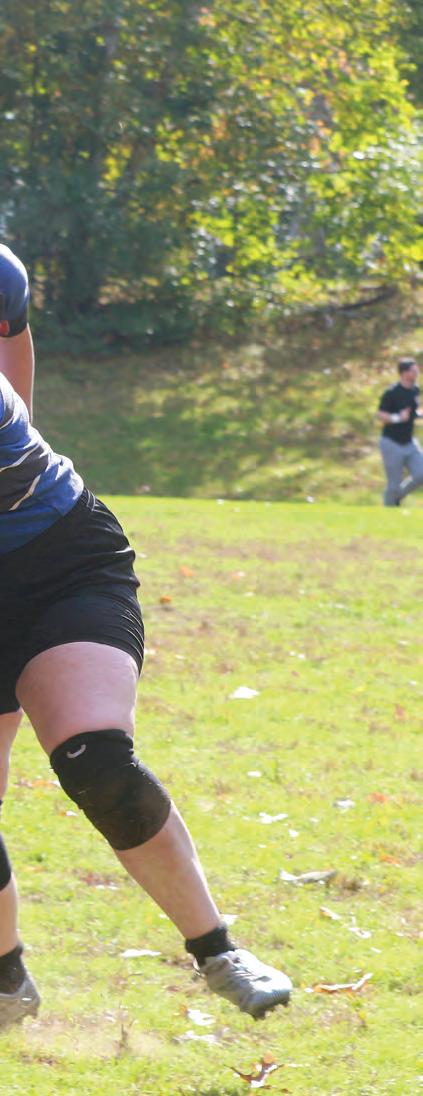
teammates backing them up. I think that sense of passion, that sense of closeness, carries off the pitch and into the greater community of rugby.”
In other words, everyone matters. There are no unimportant positions. Ethnicity and skin color don’t matter. What matters is whether players can do their job.
“Rugby is like dominoes. Every action is a ripple effect resulting in success or failure,” Pudlo says. “If the forwards crash and ruck, then the scrum-half can get the ball out to the backs, who can then use the space the

forwards provided to run the ball down the field for a try.”
Many players admire that while many contact sports, such as hockey and lacrosse, have been tamed for the “fairer sex,” rugby makes no exceptions. Kate Miller, a scrumhalf for Amoskeag who played ice hockey and softball growing up near Buffalo, says “the best part about rugby is that it is the exact same game for men and women.”
“The ball is the same size, the field is the same size, and all the rules are the exact same,” says Miller, 29, a middle school physi-
cal education teacher. “That’s so refreshing after growing up not being allowed to check because we played girls’ hockey.”
But the real best part? Almost anyone can play, provided they can take the punishment. Burton says she has “always described rugby as the ‘catch all’ for lost athletes, in a good way. You can be short, tall, big, small, a star athlete or have never played a sport in your life, and there’s a place for you in rugby.”
Amoskeag’s Morgan Jones first started playing rugby in 2012, when she joined the
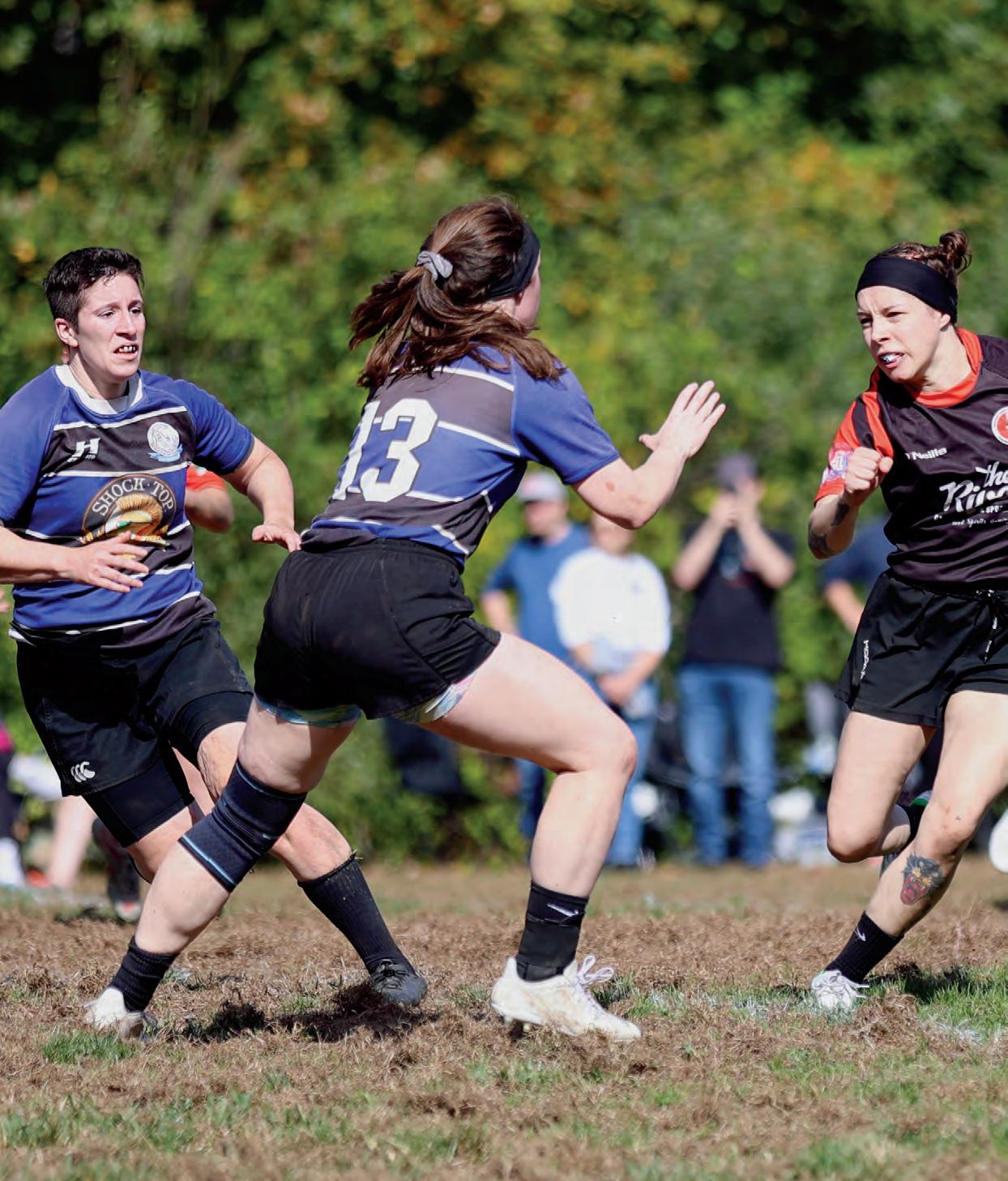

Vermont Law School team while working toward her law degree. “My now ex-husband had a friend whose girlfriend was playing with the team, and we went to watch a game, and I fell in love with it at first sight,” says Jones, now 43. “I kept rugby, ditched the husband.”
“I’ve never played another sport. I never fit in another sport, as a nerd with no decent sprint speed,” she says. “I went from zero to 80 minutes of rugby battle.”
Jones’ teammate, Savannah “Sav” Hunter, a case aide with Nashua Division for Children Youth and Families, says “if you look at our team in plain clothing, lined up next to each other, I bet you wouldn’t be able to tell they all play rugby.”
“We have a ballerina, we have weightlifters, we have parents,” says Hunter, 28, the mother of an 8-year-old son. “That’s the beauty of the sport. You just need to be an open-minded person with a willingness to try something new. If there is one trait we all share, it’s dedication.”
Differences go far beyond body types. “Honestly, that’s one of the cool things about rugby — there doesn’t seem to be a type,” says Amoskeag’s Christine Topliff, 38, a systems engineering manager with L3Harris. “I’ve met introverts, extroverts, people who never played a sport, people who have never done contact, people who have played hockey, soccer, did track, etcetera.”
“If I had to describe a trait that they all seem to share is not only a drive to be a part of a team, but a strong sense of self and perseverance to be good at whatever they do,” Topliff says.
Pudlo says she “never had true community until I found my first rugby team in college. I didn’t like the party scene and always felt out of place. But when I started celebrating with my rugby team, something was different. People always checked in with one another to make sure they were having a good time and if they needed anything.”
“For my entire adolescence, I had been a bit of a loner, disappointed by a lot of my friends in the past and unable to really connect with a group,” she says. “But rugby welcomed me with open arms and made me feel valuable and accepted. The nature of the game values connection and respect are unlike any sports team I’ve ever been a part of.”

Burton echoes similar sentiments. “Most rugby players join for something new to do, but they end up finding so much more than a sport,” she says. “They find a sense of belonging and a safe space to be themselves.”
The action on the pitch is typically take-no-prisoners intense. The game’s sheer physicality helps to build strong bonds that nurture an unshakeable sense of camaraderie.
“Rugby is hyper-inclusive and creates a community through shared experience,” says Dover’s Naomi Connelly, 40, a sergeant first class in the United States Army. “In high school, track was the ‘inclusive’ sport. There was an event for everyone, but you still competed individually. In rugby,
there is a position that requires every kind of person in a true team effort.
“Are you big? Perfect, you’re a forward. Are you small? Awesome, you can slip through tackles. It takes all kinds to make an amazing team,” Connelly says. “Further, once you play rugby, you have a weird little cult-like connection with rugby players around you. There are aspects of the game and the culture that truly are only understood once you have been a rugby player, and you keep those aspects for life.”
That mindset extends far beyond the playing field. The game is defined by an overwhelming sense of respect and sportsmanship between combatants. The shared post-game handshakes, high-fives and hugs
are genuine. Often, teams gather for a few adult beverages.
“When your sport requires physical contact to the level that rugby does, there is a much greater level of respect between players. There has to be,” Connelly says. “We’re all vulnerable out there. That’s likely why we have less crazy injuries than football players — we have to know how to give and take a hit, how to move, how to land — and the other team learns this as well.
“When I get rocked on the field, I’ll be the first to tell whoever just flattened me that it was an excellent hit. We’re intrinsically linked to everyone we play. That respect creeps out of the field and into what happens afterward,” she says. “On the

flip side, when a team doesn’t get it, when they believe that everything is fair game, or they play dirty, other teams will let them know it’s unacceptable, either overtly or through a slow distancing. We don’t hang out with people who don’t uphold that level of respect.”
Though the players are women, they still represent the time-honored maxim that “rugby is a hooligan’s game played by gentlemen.”
“Even though it involves a lot of contact, and everybody wants to win, what matters more is the spirit in which we play the game, and how we treat our teammates, our opposition and the match officials,” Chicknavorian says.
While a rugby team may provide a “safe space,” a rugby field is not. Every player accepts that injuries are the collateral damage, and acceptable risk, of the game. Matches end with most players sporting uniforms stained with grass, dirt or mud. Most will also have bruises, scrapes and cuts. Few finish a game without the requisite aches and pains.
“I won’t lie. I’m usually sore after games,” Burton says. “The soreness means I pushed my body to be the best I could be for myself and for my team. I’ve suffered a few bruised ribs and have shaken up my head a few times, but I’ve never had any serious injuries or anything that has required surgery.”
In a strange way, that’s also part of the draw. “I’ve been lucky enough not to have had any serious injuries so far, nothing requiring significant medial intervention,”
There are plenty of opportunities throughout the Granite State. Options include clubs that feature men’s, women’s, youth and veteran (or old-timers) teams. Most clubs compete during informal spring seasons, hosting unofficial scrimmages with other area teams (this is when many new players learn the game), and a formal fall season under the auspices of the New England Rugby Football Union.
Amoskeag Rugby Club Manchester / amoskeagrugby.netlify.app
Freedom Rugby Football Club North Hampton / freedomrfc.com
Monadnock Rugby Football Club/Wolfpack Keene / monadnockrugby.com
Seacoast Rugby Club/Seacoast Women’s Rugby Dover / seacoastrugby.org seacoastwomensrugby.org
Upper Valley Rugby Club / Mountain Men and Valkyries Lebanon / uppervalleyrugby.com
New England Rugby Football Union nerfu.rugby
Jones says. “I don’t know how long I’ll keep playing. Since I’ve made it to 43, it seems like I might as well play at least until 50.”
Amoskeag captain Molly Hildebrandt, in a match against the North Shore Monsoons last fall, suffered a compound fracture of her right forearm, her first serious injury in almost two decades playing. A month later, she was already looking forward to the next season.
“The arm is doing great,” says Hildebrandt, 36, of Manchester, whose husband Maciek Lewandowski plays for the Amoskeag men and coaches the women’s side. “Stitches are out, and I just have to be a little gentle with it for a bit. Two plates and 13 screws later, I’m bionic.”
Topliff’s list of injuries runs the gamut, including a sprained MCL, a dislocated shoulder, jammed fingers and toes, and almost too many stiches to count. “I keep coming back because there is nothing like this sport,” she says. “It’s the most therapeutic thing I have done for myself, both physically and mentally. It gives me a solid reason to work out, and it gives me a place to put my frustrations and stress.”
“I plan on playing for as long as it makes sense,” Topliff says. “I was out last year when I was pregnant with my daughter, and I came back the very next season.”
In the same vein, Folkins says the real pain usually surfaces “the following day, when I feel like I got hit by a Mack truck. The adrenaline definitely shields you from feeling pain, until it’s gone.”
“I have broken my nose — had it set on the sideline — torn my ear, torn my left ACL, sprained my right and left MCLs, sustained a left shoulder subluxation, right knee subluxation, right shoulder second-degree separation, broken my left thumb and ring finger and split my head open above my right eyebrow, good for 26 stitches,” Folkins says. “I have never had a concussion. I keep coming back because I’m persistent and want to go out on my own terms.”
Perhaps the most difficult part of rugby, say participants, is giving it up. Even at 58, Chicknavorian says she keeps playing “because that ‘good’ hurt is addictive, and I am drawn to the physical challenge and the complexity of the game.”
“I’m the oldest player on the team, by quite a few years,” she says. “But I will keep playing as long as my body lets me.” NH
The small Granite State town of Winchester has annually celebrated the pickle for a quarter of a century. But why?
BY CALEB JAGODA
PHOTOGRAPHY BY MAX
SCHOENFELD
Kevin Bazan, a stocky man in his early 50s, stands on a beige gazebo framed by corn stalks while speaking into a microphone. He has some serious instructions to convey to a group of contestants.
“You have to eat the pickle that was given to you. There’s no trading pickles or anything like that. Is everyone ready? When you get your pickle, just hold onto it. Hold on. Hold on. Get a good grip on that pickle.”
Despite the absurd, or possibly ribald, connotations of his speech, Bazan is being quite literal and rather earnest, coordinating the proceedings before him with a certain whimsical dignity.
As president of the Winchester Pickle Festival Committee, Bazan plans, organizes and executes the town’s unusual annual event with three other committee members and a number of volunteers. This specific day marked Winchester’s 25th annual Pickle Festival. Bazan was announcing its pickle eating contest, where contestants line up in the lawn adjacent to Conant Public Library and attempt to consume a single oversized deli pickle as quickly as possible.
Bazan paced in front of the gazebo, chittering into the microphone as his daughter passed out pickles. A small crowd leaned in around the dozen or so participants.
“Do all contestants have a pickle?” Bazan continued. “Like I said, it’s the first person to consume it completely. There can’t be any pickle in your mouth. I will be inspecting. Three, two, one, go!”
A pickle festival — that’s not something you hear every day. There are pumpkin fests and apple harvest days, hay rides and corn mazes, but celebrating the pickle seems ... unexpected. While harvested crops traditionally get canned and pickled before the cold season, refrigeration and industrial farming have turned food preservation into a frivolous (if not geriatric) hobby, and the word pickle doesn’t exactly conjure fall-like imagery. It just kind of floats there, green and oblong in the mind’s eye, disconnected from connotation or communion. Unless you’re from Winchester, New Hampshire, that is.
Winchester is home to roughly 4,200 residents and sits nestled in the southwestern corner of the state, bordering Massachusetts and separated from
Vermont by less than a mile. It’s held an annual celebration of the pickle on the fourth Saturday of every September since 1998 (excluding 2020, due to the pandemic); 2023 signified its 25th year doing so. A pretty odd, remarkable feat. Like any sane human, I had one question: Why?
It’s a simple inquiry with a slippery answer. Here are the facts: The festival was founded in 1998 by Gary O’Neal, a Winchester resident looking to kickstart a fall celebration. Another Winchester resident, Henry Parkhurst, decided to don a green leisure suit and act as the festival’s mascot, calling himself “Mr. Pickle.” Parkhurst led each festival’s parade and took pictures with attendees at the aforementioned gazebo.
Every pickle fest would also feature volunteers distributing free pickles, a canning/pickling contest, a pickle-eating competition, and myriad vendors encouraged (read: required) to sell at least one pickle-related item. While the event started small, it steadily grew — through word-of-mouth and the advent of social media — to its current state, welcoming roughly 100 vendors and 5,000 attendees every year.
Henry Parkhurst died on Dec. 22, 2022. Gary O’Neal died on March 8, 2023. Neither of the event’s icons would be in attendance for its quarter-century commemoration.
But none of this answers that lingering question: Why? Why pickles? And, with its two torchbearers passed on, you couldn’t exactly go to the source to find out.
There was only one thing left to do: Attend the 2023 Winchester Pickle Festival and attempt to answer not only why but also, who were Gary O’Neal and Henry Parkhurst, and why were they, specifically, so fascinated with pickles?
Chomping into a true monstrosity of a pickle, I felt my right jaw twinge. A sharp pain shot through my face, and I started chewing slower, more controlled. This thing was less of a pickle, and more of a gardening experiment gone wrong, discarded into a bucket of vinegar.

Heeding the advice of several pickle festival volunteers, I grasped the green monster horizontally, eating it like an ear of corn — which very quickly turned out to be a mistake. To my left stood Mike Patenaude, reigning three-time pickle-eating champion, hunched over in the shape of a question mark and absolutely demolishing his pickle. He held it up-and-down, like a microphone, twirling the pickle with each bite as if descending a salty spiral staircase, mouth-first. Duly noted.
I hadn’t planned on participating in the pickle-eating contest, but after interviewing
a few volunteers about the merits of the craft, I became cornered by my credentials.
“It’s part of the journalistic experience to immerse yourself,” one lady said, from behind a table stacked with Mason jars entered into the canning competition. “Robin Roberts had to bungee jump in New Zealand. She actually interviewed their former Prime Minister and said, ‘I bungee jumped in New Zealand. Did you do that in New Zealand? That’s your home country.’ And he said, ‘Hell no.’ It’s all about inserting the journalist into the experience.”
She had a point. Plus, I got to witness a
master of his craft at the peak of his powers, like seeing Jordan play on the ’96 Bulls — and, to boot, compete side-by-side with him. When I interviewed Bazan about the pickle fest a week before attending, this is what he had to say about Patenaude: “Nobody even comes close to him. He’s a monster.”
Patenaude finished his pickle in 44 seconds, while I still gripped two-thirds of mine, cold and dripping in my right hand.
“I don’t have a strategy,” Patenaude informed me in a post-game interview. “At all. Pretty much just go into it. Just, mindset,
make sure you focus on yourself and not others, and that’s the big thing.”
Patenaude wore a deeply-stained red hoodie, and from what I read on a Facebook comment, had just gotten off work in Keene, at noon, and raced over to make the 1 p.m. start time of the contest. This man would stop at nothing to be a champion.
Patenaude was one of many colorful local characters dotting the day. Upon first arriving in Winchester, on the hunt for coffee after a two-hour drive, I ambled over to a pop-up tent and was met by a true force of nature: Louise Dianne Sylvester holding court.
Selling handmade baked goods, Sylvester reeled in just about every unsuspecting passerby who got within earshot; it was as if she had her own gravitational pull. “I’m telling you, I’m the real deal!” she barked at me as I eyed the calzones. “I’m like, ‘No one’s ever seen or met me before!’ That’s how legends are made. But if you want an Italian, I’d say get it real soon, because these go quick.”
I later learned that Sylvester’s peddled
her wares at the pickle fest since its inception — and that 2023 would be her last time doing so.
“It’s just a lot of work,” she said. “I’m exhausted. I’m fatigued. I live in town, so the pickle festival is like hometown to me, so I have to come out.”
Catching her at a picnic table on a short break from pushing pastries, Sylvester told me, among other things, that she won the New Hampshire Bake-Off five years in a row, from 1982 to 1986; owned and operated a number of bakeries across the state, before closing them all in 2000; and, after being married four times, is “looking for number fiiiiiive. I’m a hopeless romantic. One of these will work eventually — or not!”
And, oh, yeah, she also knew Gary O’Neal and Henry Parkhurst, working at a catering company with the former and living at a renovated schoolhouse in Ashuelot (a village in Winchester) where the latter once worked as a teacher.
Nearly every conversation I had eventually cornered Henry and Gary’s


absence; it hung in the air like a thick fog, unavoidable and alien. At the gazebo where Parkhurst used to take pictures with attendees — dripped out in green and chewing up the scenery — now stood a Mr. Pickle monument: his former outfit, propped up and empty, next to a framed photo of Parkhurst at pickle festivals past.
If their absence loomed that large, I can only imagine what their presence was like. Talking to volunteer after volunteer, resident after resident, this is what I gathered: Gary O’Neal was an eclectic Winchester resident who worked as a chef and held a passion for the arts. Hoping to give Winchester its own fall festival, O’Neal considered other beloved galas — Keene’s pumpkin fest, Harrisville’s zucchini fest, Grafton’s garlic fest — before deciding on the pickle.
There was no definitive reason, no obsession with the pickle; rather, it was a matter of creative pragmatism. On top of maintaining friendships with a number of local farmers known for their pickling, O’Neal clocked the affordability of pickle-making and wanted to give Winchester a mark of real idiosyncrasy.
With that said, there’s no denying Winchester’s sizable Polish community — and pickled foodstuff plays a huge role in Polish cuisine. The Pickle Festival’s Facebook page even states, somewhat discreetly, that it’s a “fall festival to celebrate the Polish heritage of Winchester.”
Talking to people, though, more or less belies this notion. Most longtime residents say the pickle has become something of a coincidental symbol for the town — something they’ve embraced, but not because of its importance in Polish culture. They just have this pickle fest every year, and now people associate Winchester with pickles.
“I think, over time, it has turned into a town identity,” said Jeny Levisee, a canning contest judge and 18-year Winchester resident. “We have this wonderful festival and winter’s coming, so how do we preserve food? It really did take on a life of its own and people celebrate that.”
And then there’s the legend of Mr. Pickle. Who was Henry Parkhurst?
It wasn’t difficult to find out. Every Winchester resident seemed to have a story about Parkhurst lighting up a room, putting on a performance, or being a role model in the community. Multiple people


told me that Parkhurst was “irreplaceable,” that he was “larger than life.” Resoundingly, nobody wanted a new Mr. Pickle; Parkhurst was so good at inhabiting the character, at hamming it up and making the day one to remember, that searching for a replacement seemed pointless, almost disrespectful. Maybe there could be a “Ms. Pickle,” or a new mascot of sorts, but there would be no replacing the one-and-only Mr. Pickle.
On every other day of the year, Henry Parkhurst was a longtime Winchester resident, former schoolteacher who taught multiple generations of the town’s adolescents, and a 19-year Winchester state representative. He had a love for theater and frequently appeared in local Lions Club plays. He was known to sport a vast collection of bolo ties. He resisted technology, so could be hard to contact if you didn’t run into him in town. And, more than anything, the people of Winchester truly cherished him.
“He was a great guy. He commanded respect,” said Kathy Morehouse, a lifelong Winchester resident and vice president of the Winchester Pickle Festival Committee. “Grown men would see Henry at the diner, having breakfast, and come in and take their hat off: ‘Good afternoon, Mr. Parkhurst, how are you?’ It was just his character — just who he was, what he stood for. He’s touched a lot of lives.”
WMUR’s “New Hampshire Chronicle” covered the 2022 Winchester Pickle Festival and, unbeknownst to all, captured Mr. Pickle’s last pickle fest. Although moving laboriously in the segment’s footage, Parkhurst still operates with moxie, taking photos, giving out hugs, and firing off zippy quips for the camera. At one point he says, “I’m the spirit of the pickle festival. I’m not who I am when I put on this suit.”
And isn’t that what pickles are all about, anyways? On the fourth Saturday of every September since 1998, Henry Parkhurst transformed into Mr. Pickle, a plethora of cucumbers metamorphize into pickles, local blue-collar guys mutate into speed-eating champions, and the small town of Winchester, New Hampshire, has, and will continue to, become the pickle capital of the world. As Sylvester says, that’s how legends are made. NH
The 26th annual Winchester Pickle Festival takes place on Saturday, Sept. 28, 2024. Visit winchesternhpicklefestival.org for more information.






Aug. 31- Sept. 1, Exeter Exeter UFO Festival exeterufofestival.org
Sept. 20-22, Lincoln 49th Annual NH Highland Games & Festival nhscot.org
Sept. 21-22, Portsmouth Fairy House Tour fairyhousetour.com
Oct. 4-5, Concord
New Hampshire Book Festival nhbookfestival.org
Oct. 12, Merrimack
New Hampshire Poutine Fest nhpoutinefest.com
Oct. 12, Keene Keene Pumpkin Festival pumpkinfestival.org
Oct. 12, Portsmouth New Hampshire Film Festival nhfilmfestival.com
Oct. 19, Berlin RiverFire Festival androscogginvalleychamber.com
Oct. 19-20, Goffstown Goffstown Pumpkin Regatta goffstownmainstreet.org
Find additional events in this issue on page 82 and online at nhmagazine.com/calendar.
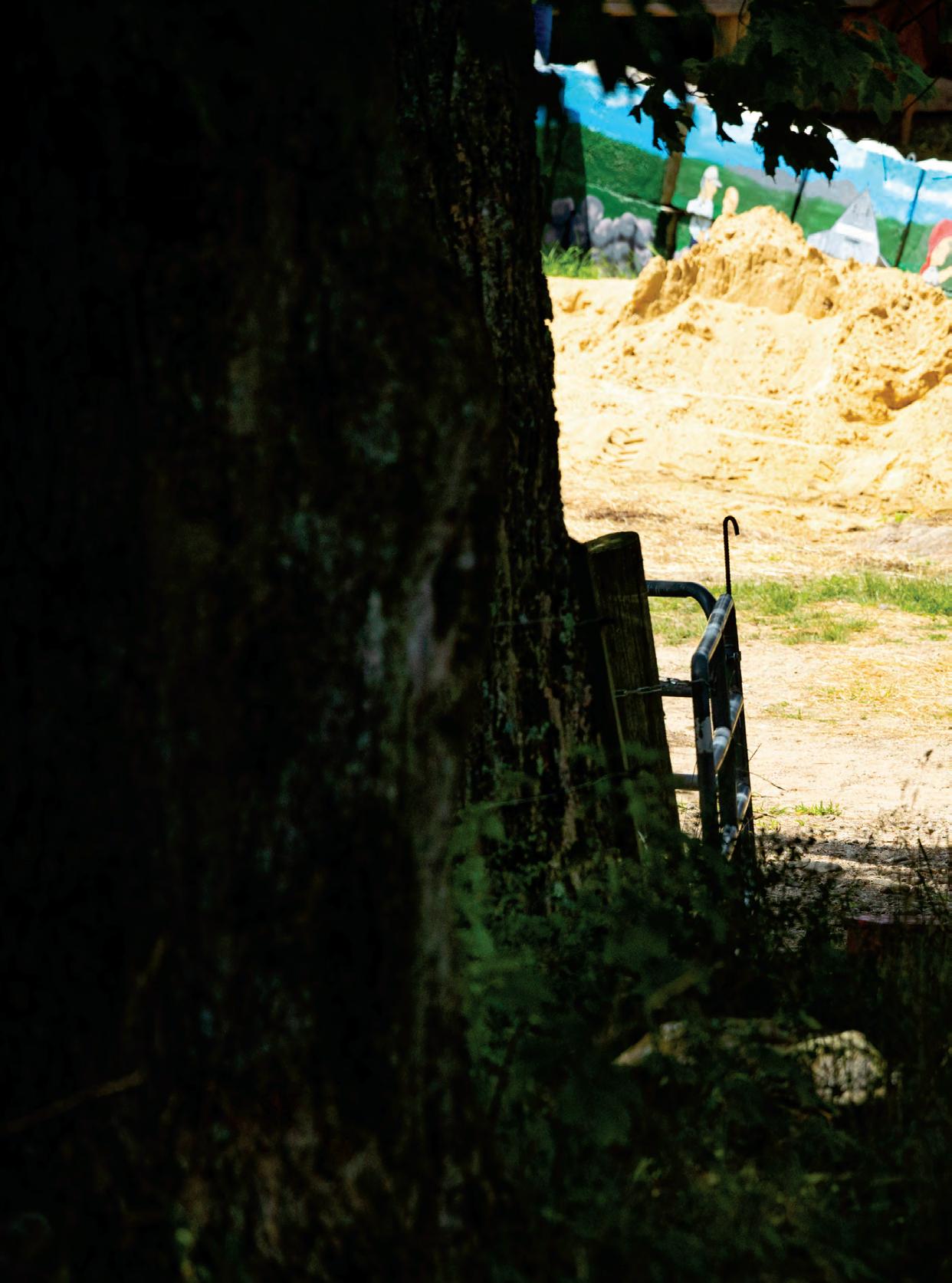
It’s no surprise that agritourism is on the rise in New Hampshire, because fall is all about farms. From leaf peepers pulling over on the Kancamagus for a piping hot cup of apple cider, to teenagers running through flashlight corn mazes and pick-your-own apples galore, the state comes alive every fall as tourists and Granite Staters alike flock to local farms. New Hampshire’s local farms are the backbone of our communities, and many of them offer unique and interesting experiences that are as fresh as their produce; with the hope that visitors will stop by and stay a while, and then keep coming back.
BY THE EDITORS OF NEW HAMPSHIRE MAGAZINE
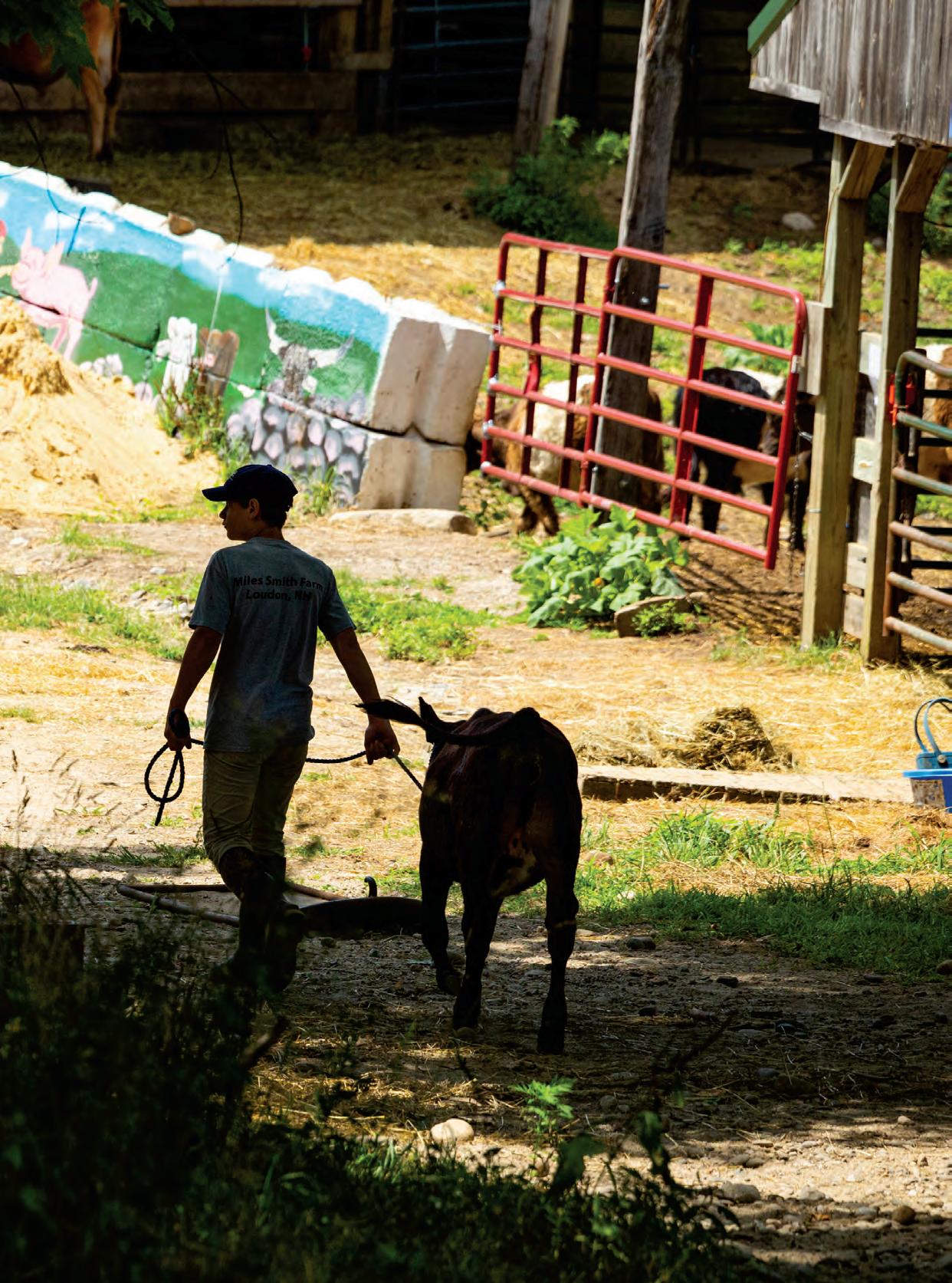

Chris LaValley grew up playing in the fields across from the farm that he now owns. Even better? He co-owns it with his wife, Danielle, both high school sweethearts who grew up in and worked at Blake Farms as teenagers in Hooksett, and then purchased the property in 2006 that became LaValley Farms that many frequent today. The sense of family and community, and the connection between them, has been baked into the roots of the farm since its inception.
“Our farm is our legacy, not just for our family but for our community family as well,” Chris says. “We’re making sure every part of the farm can last forever, not just for my kids, but for yours as well.”
The first-generation farm started on 50 acres with fruit and vegetables that the LaValleys sold at the farmstand. Now in its 18th year, the farm occupies 65 acres and includes a Manchester farmstand, pasture poultry, and horticulture and floral shop.
“We slowly added more produce over the years from other regional New England areas and farms to fill ours out and supplement as needed,” Chris notes. “Not only are we passionate about bringing customers the freshest produce available, but we love that that means we’re able to support other farms in this way as well.”
Their original farmstand in Hooksett boasts fresh non-GMO produce picked daily that the LaValleys promise will taste as fresh as it looks.




“We have watermelon, zucchini, lettuce, tomatoes, meats and everything in between,” Chris says. “People come to us for a variety of things, but in the summer, it’s corn. Paired with local sausage and other veggies, it’s a summer staple for us around here.”
Stop by their greenhouse next door and you’ll also find an abundance of options to fit your gardening needs from bedding plants to vegetable plants.
“We pride ourselves in being able to offer vegetable starter plants that are from the same plants that we grow on the farm,” Chris notes. “The same cucumber that you see and buy in our store, you can grow in your own garden. I hand-pick them — each is high yielding, disease resistant and made to grow in our tricky New Hampshire climate. We believe that starting you with a healthy plant will best set you up for long-term success.”
Not only do customers have the opportunity to reap the benefits of the LaValleys’ growing practices and legacy mindset in their own gardens, but local restaurants do too. Restaurants like Tucker’s look to LaValley for their pasture-raised eggs to use in their kitchens, and grocery stores sell their produce and other goods.
“Having restaurants and stores support our farm allows practices like our egg operation to be big enough to be efficient,” Chris says. “We pour into each other, and like we tell our customers, investments in each other are investments in food security — keeping our land open, keeping our food close and keeping our food safe — which is priceless these days.”
From their farm fields to your kitchen table, the LaValleys are passionate about taking care of you as much as you take care of them.
“If the last few years have shown us anything, it’s the importance of community and how food ties us all together,” Chris says. “We’re so excited to finish up the summer season as we welcome in fall together with pumpkins, mums and turkeys. It may be the most beautiful time of year around here — we can’t wait to see you.” lavalleyfarms.com
Buying a community supported agriculture share gives you access to anything at the farmstand in Hooksett and at the Manchester cart. Once your share is loaded on your card, you can use it for everything from freshpicked produce to locally raised meat and handmade pies or local decorations.

Brookford Farm, Canterbury
After graduating college with a degree in anthropology and realizing that he didn’t want to work in a museum, Luke Mahoney had a career change.
“I had always been a hands-on, hands in the dirt, physically active guy,” Mahoney says. “I wanted to stay outside, and agriculture seemed like a good place for me. I wanted to have a positive impact on the world, and I thought organic farming would be a good place to end my search.”
With no prior experience, Mahoney started farming and apprenticing in Pennsylvania. Eventually, that led him to farming in Russia, where he met his wife, and to Germany, before settling down in New Hampshire.
“I was in Russia in 1999, which was not long after the fall of the Soviet Union,” Mahoney says. “I was in rural Russia, in a region that centered on agriculture. The farms were humongous and the whole community supported the industry. I sharpened my teeth on machinery and repairs, and (I learned how to be) innovative, creative and spontaneous. It was an incredibly formative experience.”
From Russia, Luke and his family moved to his wife’s native Germany, where Luke continued his training in diversified organic



farms before moving across the pond to New Hampshire, where the family remains today.
New England’s community orientation and quaint way of living, coupled with New Hampshire’s legislations on raw dairy, made the Granite State the perfect place to start their dairy farm.
“We had an incredible opportunity in Rollinsford for 300 acres of land, with all the equipment and milking parlors set up. We couldn’t pass it up,” Mahoney says. “Without that, it would’ve never happened. It took us a while to fill it, but over the five years that we were there, we feel like we filled that 300 with activity.”
For more than 12 years, Brookford Farm has called Canterbury their home. Their vision for a diversified farm, where different species of plants and animals are grown and raised, is in full swing. With 40 species of vegetables, dairy cows, beef cows, sows, chickens, eggs and more, along with their events and their annual Sunflower Festival, Brookford Farm is hoping to do it all.
Mahoney hopes that this year, they can drive more traffic to their farm store, and get more people to attend their events and visit the farm. The ultimate goal is to become a regular part of people’s lives.
“We’re only one mile off of I-93,” Mahoney says. “We want to see people come to our farm more and more. That’s why we’ve gotten into events.”
Brookfield Farm’s events begin in May with the annual Heifer Parade, which celebrates the seasonal transition and the heifers going to grass. This past June, the farm hosted a Strawberry Jam-Borree, which was a massive success, and they hosted Hideaway Circus for a Circus on the Farm night.
“We’d like to do more interesting shows, and marry different art forms with agriculture,” Mahoney says.
“Our next event is our Sunflower Soiree,” Mahoney says. “It’s a really cool, and has pick-your-own sunflowers, cow pie bingo, live music and so much more. This year, the Soggy Po Boys are playing. Then, we’re doing a Pumpkins and Puppets event in the fall, which will have larger-than-life puppets.”
According to Mahoney, the best way to support the farm is by going to an event, or by stopping at the farm store.
“Direct support to the farm and events, without the middle man, is the most beneficial,” he notes. “And tell your friends and neighbors!” brookfordfarm.com

Jeff Mills remembers his first job working for Moulton Farm when he was 16.
“I did a lot of picking of vegetables and washing. That was my first job; first summer here,” he recalls.
Of course, he eventually moved up the ranks as he got older, taking on new responsibilities at the Meredith farm as needed.
“I worked here all through college and then stayed on after college,” Mills says.
Now as general manager, his daily tasks have gotten more complex, but he hasn’t forgotten one core mission of the farm: to grow outstanding crops for local residents.
Not many farms in New Hampshire today can say they’ve been serving up fresh veggies since the 1890s, but since the old days, Moulton Farm has gotten the job done; that’s why they’ve been such a popular place for locals every summer.
“It’s a diverse farm offering quality produce, prepared meals, freshly baked breads, pies and cookies while providing exceptional customer service,” he says.
Though last year’s harvest had some bumps and bruises weather-wise, this year’s searing heat is leading to a bumper crop, Mills says.
“It’s been a very good growing season. We are able to irrigate and we have been doing that a lot this year. Sun was hard to come by last year. We can always add water; we can't take it away. We will take a dry year like this over last year any day,” Mills says.
For example, a July news post on their



website reveals they’ve already started picking corn, and it’s one of the earliest seasons in their record books.
“The corn we are picking now doesn't have that ‘super sweet’ sugar content that the later season varieties have, but it performs well in the cold start of April, has a decently sized ear, and still provides sweetness and the flavor that only fresh corn can provide,” Mills writes. “The best thing about our corn season is that the corn only gets better as the season progresses."
Other top crops at Moulton Farm have been beans, both yellow and green; field tomatoes; and a broad variety of peppers, including shishito, jalapeno, cubanelle and green bell peppers, according to Mills’ post. They boast 14 varieties of corn, so you’re sure to find exactly your taste.
Robust stalks of corn aren’t just great for the kitchen table; they’re also excellent as tall concealing walls for the corn maze that Moulton Farm is planning to open Sept. 21, but more details, like this year’s
design, are under wraps as of this printing.
“Our corn maze has been planted and the design has been finished. I can't quite give that away yet,” Mills says.
At their farm bakery, they sell apple pies, cookies, rolls and breads, including Moulton’s Signature Harvest Loaf. Their garden center offers various heirloom varieties of tomatoes, pumpkins and melons — the juicy, tender kind that are synonymous with New Hampshire summers on the farm.
At their garden center, visitors can find organic seeds and seed-starting supplies, soil and soil amendments and mulches, and also offer planting services. Some flowers and herbs, shrubs, perennials and fruit trees at Moulton Farm have been acclimated to the climate and soil conditions of the Lakes Region; some varieties for sale are ones that staff likes to personally use at their own home.
In addition, the farm has gone mobile with its new food truck, dubbed “Moulton’s Hay Wagon.” The Hay Wagon doesn’t just serve items made from veggies grown on the farm, but also makes sandwiches that have roots in other parts of the world.
For example, their Banh Mi sandwich is made with lemongrass-marinated grilled chicken, jalapeno, pickled carrots and daikon. For a more traditional palate, they also serve “Sunday brunch,” fish and chips, turkey melts and more. Wash it all down with an old-fashioned drink like Squamscott soda and Nixie flavored seltzer water, and your summer visit to the farm is complete.
Given that it’s been such a plentiful summer for local farms, apple picking, pumpkin picking and every other activity that comes with fall in New Hampshire should be spectacular.
“In addition to our farm market being open daily and offering a large variety of apples, pumpkins and fall ornamentals, our corn maze will open Sept. 21. We will offer tractor or horse-drawn carriage rides to the pick-your-own-pumpkin patch,” Mills says.
The farm offers both great food and entertainment.
“We will have music on most weekends," Mills says. " Of course, our Hay Wagon food truck will be serving hot lunch as well, plus the cider donuts from Cider Bellies Doughnuts is always a hit." moultonfarm.com

Miles Smith Farm, Loudon
In 2005, Bruce Dawson and Carole Soule sought a change from the highstakes corporate world in which they lived and worked.
Surprisingly, Miles Smith Farm, a 26-acre primarily grass-fed beef farm in Loudon, was the answer.
It turns out that job satisfaction and happiness can come in many forms.
“I switched, because the stress is not as bad in farming as it was in the IT world. I think Carol just simply got tired of working in corporate America,” Dawson says.
Since making that life-changing decision nearly 20 years ago, the couple have continued the traditions and work ethic started by the farm’s namesake. They’re continuing the work started by Miles Smith, who first tilled the land as early as the 1830s. Smith, a stone mason, helped provide food for Shakers living nearby.
“We sort of took a chapter out of his book and made a farm similar to what he was doing, although he ended up doing crops, mostly potatoes. He had some beef cows, but we decided to continue with the beef because they're very good at keeping the weeds mowed,” Dawson says.
Smith was also a hog reeve, a fancy, yet old-fashioned name for someone who evaluates damages done to crops by stray pigs, then finds ways to contain the wayward swine. Amazingly, it’s still an elected office in some New Hampshire townships. Several



years ago, Grantham famously appointed a newlywed couple to the esteemed job.
While there are no hog reeves at Miles Smith Farm, there is a mischievous little pig that roams the property. Tazzy may be one of the state’s most popular mascots. A miniature pig, Tazzy often makes headlines for its gallivanting, freewheeling nature. Carol brings Tazzy with her to political events around the region.
“She’s been around a lot; she's been in the news a fair amount. Whenever there's a political event going on, like in Manchester, you'll see Tazzy and Carole down there,” Dawson says.
When Soule is not on the road, she’s working at the farm and documenting daily
activities at the petting zoo, where they have chickens, horses, sheep, goats and more.
The farm’s website reiterates the health benefits of eating their grass-fed, locally raised beef and pork, which live in open environments. This beef has no hormones or antibiotics, and the farm is GMO-free. Besides raising grass-fed cattle, they also sell pastured pork and poultry, eggs and maple syrup, and partner with many local and New England-based food vendors.
Shoppers can browse the farm’s website according to preference: There are gluten-free and nitrite/nitrate-free options, for example. Choose from a wide variety of meat, like pork belly, pork kielbasa, pork chops; grass-fed burger patties and beef
bones, even Delmonico steak; and plenty more. And stocking up your freezer by buying in bulk can keep costs down, they suggest.
There are two types of cattle at the farm: Scottish Highlander, known for their hairy coats and lengthy horns and for being a durable breed, Dawson says; and Belted Galloway, “which have long flowing hair, if you will, in the wintertime.” Belted Galloway are known as Oreo cows, so named for the alternating white and black segments on their bodies.
Dawson and Soule take pride in their cattle, and make sure to treat them humanely, including naming each cow that arrives on the farm. Dobby D is a reddish-brown, mini–Scottish Highland bull calf for sale, and Crackle sports a silvery mane. June Bug is a friendly 6-year-old cow just waiting to be loved.
“The people who buy our live animals, buy them for a number of reasons. Obviously, the backup is so that they can, ‘well if all else fails, they'll always have some meat,’ but they buy them for everything from lawn ornaments to animals for their kids to train. They just want an animal to go around and mow their lawns,” Dawson says.
Kids, on the other hand, might say “ew” and “yuck” when they hear they’re about to take care of a Scottish Highland cow, but those expressions soon turn to “ooohs” and ahhhs” as they proudly show off the cattle they’ve been taking care of all week as part of “Cow Camp.” It’s an intense 4-H experience for kids that’s now an annual event here.
Participants can spend a week getting to know the likes and dislikes of their very own calf, and learn how taking care of an animal can instill in them self-confidence and responsibility.
Camp activities include playing farm games, brushing, snuggling and scooping the cows, learning about their family members, running with their new best buddy, and writing in their journals about their adventures together. Once they get past the gross factor of scooping, Dawson says, kids are able to take the necessary task in stride.
On the last day of Cow Camp, the children hold a “calf show” and costume contest to show off what they’ve learned about caring for these gentle creatures. “Every kid should spend time like this on a farm,” writes Carole Soule in a blog post about this year’s camp. milessmithfarm.com

Bin
Hardy’s family since 1845.
In the past 144 years and six generations, the 400-acre farm has grown from a small, traditional New England farm into a successful wholesale and pickyour-own enterprise that’s at the forefront of trickle irrigation, right in the heart of Hollis.
“We were all brought up in the business, and chose to stay or eventually come back to it,” Hardy says.
Brookdale Fruit Farm’s secret to their long-lasting success has been their commitment to staying on the cutting edge of technology and distribution. In the 1920s, they had the first cold storage unit in the state, which was cooled using ice blocks, and during the onslaught of mills that sprang up in New Hampshire during the Industrial Revolution, they increased their distribution radius to bring milk to the mills' boarding houses in Nashua. Their ability to distribute farm-fresh goods quickly has been one of the farm’s main tenets.
“We have our own distribution network, and our own trucks on the road in the morning,” Hardy says. “We can go from farm to table in 24 hours. Our biggest asset is producing and delivering fresh product, which is difficult to do with a smaller farm.”
A few years back, Brookdale was named one of five conservation farms in the United States. The farm uses practices like crop




rotation, nutrition management and soil mapping to ensure that nutrients are being put back into the soil, and so that they have an understanding of what’s going on in the soil nutritionally before each growing season.
“We do a lot of specific things, like soil mapping, for our farm management for the soil type and fertilization for different crops,” Hardy says.
Brookdale Fruit Farm currently finds themselves on the forefront of trickle irrigation, which allows the farm to conserve water.
“We raise a lot of our products on raised beds with plastic underneath,” Hardy says. “Our irrigation system is also used for fertilization and nutrients, and we can be very specific with our application.”
Hardy works with New England Fruit Consultants to help evaluate and target what kinds of insects and diseases may pop up during the growing season, so that they can be proactive in their spray programs. Using a proactive approach to pests and diseases means they don’t have to use any more sprays than they need to, which is ultimately better for the crops, environment and consumer.
Brookdale Fruit Farm is bustling with activity year-round, but their pick-your-own programs are particularly popular. The PYO season begins in the summer with strawberries and extends into the late fall with Brookdale’s last crop of apples.
“It’s well laid out,” Hardy says. “We have dedicated areas for PYO that are mowed, and we have dozens of varieties of apples. Last year, the Hippo named us the best PYO in the state, and people travel for that. Agritourism is important for PYO and goes in hand with the fall tourism.”
Hardy takes great pride in the farm’s fall atmosphere, and offers hayrides and corn maze tickets at reasonable prices, so that every family can enjoy fall festivities on the farm.
“The most important thing you can do to support your local farm is shop locally, or shop some locally,” Hardy says. “We’re unique because we do a lot of wholesale, but other farms have to rely on farmstands and local sales. Buy your corn at a roadside stand instead of a supermarket.”
“Everybody should be aware that this has been a great growing year compared to the past two years,” Hardy says. “Farmers are able to produce an abundance of product and what we would expect for our product. Last year was a disaster. We’re all trying to rebound.” brookdalefruitfarm.com

The minute that you pull into the driveway at Vernon Family Farm, you’re considered part of the family. Whether you’re doing your weekly shopping at the farm store or attending a Friday summer night live music event, this family farm focuses on creating a community space that serves as your home away from home — a mission that owners Jeremiah and Nicole Vernon have been passionate about since they founded their 33-acre farm in Newfields in 2014.
“It’s been our focus since day one to be the people who grow your food and bring community together through it,” Nicole says. “It’s been a wild last few years, especially for us, and it couldn’t be more evident that connecting with each other, pouring into you as you pour into us, is what holds us together.”
The Vernons founded Vernon Family Farm in 2014, but they came into their new family business with a decade of prior experience in farming everything from livestock to vegetables.
As a first-generation, owner-operated pastured livestock farm, they pasture-raise chickens (one of their most popular draws), cows, pigs and lambs, all using regenerative practices, and they sell their meat along with products from over 50 local farms and makers at their year-round farm store — a community favorite.
“The store started as a household freezer, and we were able to build it up to what you visit now with display cases and shelves,”



Sign up for a local meat share with rotating monthly items ranging from a variety of cuts like grass-fed beef, pasture-raised lamb and/or chicken and more. Choose from a subscription level with a box perfect for a couple or family, and pick up your box on the second Saturday of each month.
Nicole says. “It’s open from Wednesday to Sunday from 9 a.m. to 6 p.m. as a one-stop shop for eating local food with an intentional focus on fresh and frozen protein like pastured chicken and other grass-fed and pastured meats, fruits, vegetables, sauces and spices. We also have our bone broths, soups, pot pie and others. It’s consistent with what’s available in that season.”
Shopping at the store is a great way to get to know your local farmer, but the Vernons know that may be intimidating for some. The solution? Agritourism events.
“Our agritourism events are a great, safe and easy way to taste the food grown and raised on our pastures, walk through the wildflower meadow, visit the grazing ani-
mals and enjoy live music with family and friends,” Nicole says. “Tacos and beer are less intimidating than starting in the farm store. They are also the first step to a lasting relationship with your farmer.”
Their event season starts in May and runs through October with a rotating roster of talent from Wellfleet to the dam Ezra Group stopping by the Vernon Family stage from Friday to Sunday nights. Vernon Kitchen, the sister catering company of Vernon Family Farm, now has a kitchen off-site in Kensington where they cook up their famous fried chicken and a taco bar to bring the food to you while you enjoy the show. (Don’t forget to drop into the farm store for dessert and a few
a
CSA CSA (community supported agriculture) programs were created to help alleviate the stress of high expenses for farms, but Vernon Family Farm’s is a little different. Instead of purchasing a share at the farm where you’ll receive several boxes of produce (including items you may or may not love), you can partake in their debit-style CSA where you can pick whatever you want. Use your CSA membership throughout the year at your local farmers market or their farm store where goods are available from more than 30 farms year-round.
groceries to bring home with you.)
After long days and seasons of dealing with the stress of owning and running a farm, and the unpredictable New England summer weather, it’s the community the Vernons have built that keeps Nicole and her family and farming staff going.
“At the end of the day, we do this because of our passion for our farm and our family, and we love sharing both with you,” Nicole says. “Farming is difficult but incredibly rewarding. All of what we’ve experienced to date is an authentic example of how it truly takes a community to fight the good fight and make amazing things happen. We can’t wait to welcome you to the farm.” vernonfamilyfarm.com NH


Swing into the end of summer by hitting the green at your local mini-golf spot
BY JILL ARMSTRONG
Fewer beach days and the dreaded return to school signal the end of summer. One way to keep the spirit of this treasured season alive is by rounding up the family or a few friends for a game of miniature golf at one of these stand-out courses across the state. It’s time to tee up!
Home to the world’s longest mini-golf hole, Chuckster’s has become a destination attraction. Right off I-93, this spot offers two 18-hole courses to challenge even the most competitive mini-golf enthusiasts. The Fire Tower course, built into the side of a hill, features multiple levels and stairs, while the Cave course is entirely ADA accessible. Both courses contain plenty of water from calming ponds and streams to powerful geysers and waterfalls.
“They aren’t like the traditional courses I went to when I was growing up with the windmills and clowns and things like that,” location manager Mark Lorenze said. “It’s more of a purist mini-golf course.” For Lorenze, hole five on the Fire Tower course is
one of the most amusing — and potentially confusing — requiring guests to purposely hit the ball into a stream and await its return on the green further down.
After a round — or two! — (those with enough energy can tackle the second course for a discounted rate), Lorenze suggests popping inside for an ice cream cone. “It’s fun to talk to people when they come in,” he said. “They’re looking to have fun. I mean, what’s better than mini golf and ice cream?”
Interested in a full day outing? Visit the original Chuckster’s location in Chichester. In addition to mini-golf, this family fun park offers batting cages, bumper boats and ziplines among other attractions. chuckstersnh.com


Maneuver around tilted shipwrecks, pesky sand traps and grounded anchors at this nautical-themed course. Captain’s Cove, with its towering white lighthouse and decorative dangling lobster buoys, will transport guests to a charming seaside fishing village, the ultimate summertime scene.
This coastal course is owned by husbandand-wife duo Brian and Dorothy Piehler, who are celebrating their 20th season in business. Dorothy enjoys hole three best, because it’s the easiest for sinking a holein-one. “It’s the sand trap,” she advised. “You’ll want to go straight through the sand trap.”
She’s also partial to hole 17, which purportedly is the hardest, longest and hilliest on-site. If couples end the course in need of a tie-breaker, she’ll send them back out to hole 17, in her words, “to see who the true champion is.”
Hole six, with its long, sloping curves, also makes for a nail-biting, single-stroke attempt. Finally, if guests can manage a holein-one on the final hole, they are rewarded with the coveted “Captain’s Treasure,” a secret prize only few will claim!
For discounts on rates at Captain’s Cove, consider purchasing rounds on their website before visiting. smallgolf.com

For a unique adventure, one to surely help beat the heat, consider a round of blacklight adventure golf at this custom-fabricated course in Claremont. Winding through the renovated halls of an old mill building, the 18-hole course at Blackbeard’s Cove is filled with vibrant features, including a blue-spotted, neon orange octopus, a glowing skull perched on a bed of seaweed and the ferocious jaws of a great white shark.
Along the walls hang custom panels portraying action-packed scenes of skeleton pirates in a fiery underworld. Spot the bright golf balls scattered throughout the panels — a full moon in one, the contents of a treasure chest in another. Even one of the buildings, coined Hastings’ Tavern, serves as an homage to the owner’s late grandfather.
Nicholas Koloski and his family opened the blacklight adventure golf course two
years ago following the pandemic, adding to the American-style grill and the escape room experiences they operate in the same building.
These attractions bring fun close to home, and for Koloski, working in the industry of fun is all about creating family memories.
“When I’m not here anymore,” Koloski shared about his future legacy, “people will still have the memories. It’s all about that.” He recalled piling into the family station wagon and visiting Funspot as a kid, even talking shop with the original founder, Bob Lawton, who has since passed.
Koloski plans to expand operations further, opening axe-throwing corrals, rage rooms (a new concept where people can relieve stress by destroying objects in the confines of a room) and two more escape rooms — making four in total — in the months to come. pirateminigolfnh.com



Check out this directory for more information about these courses and other fan favorites from around the state.
Blackbeard’s Cove Adventure Golf
101 Mulberry Street, Claremont pirateminigolfnh.com escapefactorynh@gmail.com
Captain’s Cove Adventure Golf 814 Lafayette Road, Hampton (603) 926-5011 smallgolf.com
Chuckster’s Ice Cream & Miniature Golf 9 Bailey Road, Chichester (603) 798-3555 chucksters-hooksett.com
Mel’s Funway Park 454 Charles Bancroft Highway, Litchfield (603) 424-2292 melsfunwaypark.com
Paradise Falls Mini Golf 252 Lee Road, Moultonborough (603) 476-5909 paradisefallsminigolf.com
Pirate’s Cove Adventure Golf Locations in Lincoln, North Conway, Weirs Beach and Winnisquam piratescove.net




Youhave spent most of your adult life creating wealth and assets for you and your family. If you are like most people, you probably believe that your final wishes will be carried out without much difficulty. Those who fail to manage their estates and create rock solid wills are leaving themselves wide open to a plethora of troubles that will make it very difficult for your loved ones and others to receive what you intended. We reached out to four of New Hampshire’s most prestigious law firms to learn more about wills and estate planning and why they are critical to protecting your assets.




QWhat Medicaid planning tools need to be looked at before using an irrevocable trust?
ATools may include purchasing long term care insurance, irrevocably prepaying funerals, paying off mortgages on principal residences, making major repairs to the principal residence, purchasing a larger or more accessible home for the community spouse, transferring the home to a minor or disabled or blind or caregiver child, renting out a home to qualify for a lower reimbursement rate, purchasing exempt items (such as clothing, furnishings and a new vehicle), investing money in a child’s home and living with that child for 2 years, purchasing a single pay immediate annuity (SPIA), establishing a family limited partnership/limited liability company, etc. This is often not enough, however, to bring the applicant within the asset limit required to qualify for Medicaid.
QWhat should a good estate plan consist of?
AAs an attorney, I am often asked what a good, thorough and comprehensive estate plan should include. It should include the following:
1. Having guardians in place for your minor children or disabled adult children;
2. Making sure that if you become mentally disabled and cannot make decisions for yourself, the people you select can legally make medical, end of life and financial decisions on your behalf;
3. Making sure that when you pass, your estate can avoid the expense, delay and hassle of probate while keeping the identity of your assets private (and while protecting inheritances against lawsuits, divorces, etc.);
4. Eliminating or reducing estate taxes;
5. Planning for the potential costs of long-term care;
6. Planning for the succession of your business, if applicable; and
7. Protecting yourself from losing assets while you are living/ lifetime liability protection.
— Fred J. Forman Forman Law Group, P.A.

ASSET PROTECTION, ELDER LAW & ESTATE PLANNING
Our firm provides expert advice on everything from simple matters (such as providing for health care decisions or guardianships for children) to complex planning designed to eliminate probate, reduce or eliminate estate taxes, provide for business succession and protect assets against long term care costs. We look forward to assisting you with your estate planning needs!
“ I never imagined that I had all of these estate planning options until (Forman Law Group) presented them to me. They have the ability to take highly complex and often confusing estate planning concepts and make them simple and practical.”
- BERNARD S.
QWhat are the basics of a comprehensive estate plan?
AMost estate planning attorneys will encourage you to plan for the management of your assets and health care decision-making during your incapacity and also the distribution of those assets after you pass.
The former are considered “lifetime” documents and include the health care advance directive and durable power of attorney. The latter directs the distribution of your estate upon your death and includes a will and/or a trust.
A will directs the distribution of your probate assets and nominates a guardian of your minor children. A trust creates a legal entity that can hold title. After your death, a properly funded trust will allow your assets to be distributed outside of the probate process, privately and according to your beneficiaries’ timeline.
QWhat types of supplemental planning do families look for?
AMany times, comprehensive planning includes supplemental trusts that address specific assets
QIn addition to a will, what are some other estate planning or end-of-life documents people should know about and what do they cover?
AHaving the proper estate planning documents can help you control the transfer of assets, avoid taxes, and fulfill charitable goals. There are several important estate planning documents to consider, in addition to a will, as you begin the process of choosing an estate plan that fits your needs.
Some essential documents to consider as part of your estate plan include a durable general power of attorney, an advance directive, including living will and medical power of attorney, and a revocable trust. A durable general power of attorney and advance directive assist you during your lifetime if you become incompetent and are not capable of making decisions on your own behalf. They are important tools that can prevent a loved one from having to obtain guardianship to assist in making financial and health care decisions down the road in the event you become incapacitated. A durable general power of attorney is a document that allows you to appoint someone

or needs of beneficiaries. Building a strong relationship with your estate planning attorney will allow them to best guide you on what tools will ensure your goals are met upon your incapacity or death.
One example of this is a special needs trust, which when properly funded and administered ensures a beneficiary who receives needs-based services from the government will not lose such benefits upon your death while allowing your assets to serve as a supplement to their basic needs.
Other families may consider special qualified terminable interest property trusts for second marriages, trusts with disclaimer provisions if estate taxes are a concern, or a family camp trust to ensure real estate stays in the family for future generations to enjoy.
— Amanda K. Steenhuis, Esq. Shaheen & Gordon, P.A., Nashua
Laura T. Tetrault, Esq. Shaheen & Gordon, P.A., Manchester

(“agent”) to make financial decisions on your behalf. It can become valid immediately, or when you become incompetent to make these financial decisions yourself. The grant of authority can be broad or limited in scope but should generally be constructed in a way that your agent can perform any financial tasks necessary, such as banking, selling real estate, and accessing safe deposit boxes.
An advance directive allows you to express your choices regarding medical care before any incapacity. The document also allows you to appoint an agent to make healthcare decisions for you in the event you become incapacitated.
A revocable trust, along with the appropriate funding documents, will transfer property owned by the trust, at your death, without the need for probate court. This generally means that your estate may avoid the cost and time delays associated with probate administration following your death.
It is important that the trust be funded during your lifetime by changing the title to the assets to the name of the trust. Real estate, bank and investment accounts, and vehicles are all examples of assets that should all be transferred from your individual name to the name of your revocable trust prior to your death.
— Laura M. Dudziak
Upton & Hatfield, LLP











Premiering on Public Television Stations Nationwide This Spring













































August 31 - September 1
September 4 - September 8




Exeter UFO Festival > Celebrating the reported Exeter UFO sighting (“The Incident at Exeter”) by Betty and Barney Hill in 1965, the town’s beloved extraterrestrial fest returns for its 12th year this Labor Day Weekend. Welcoming hardcore ufologists and mischief-makers alike, the Exeter UFO Festival features accomplished speakers giving talks on the state of extraterrestrial research at town hall, with activities for kids of all ages. The festival also offers collectables like T-shirts, hats, sweatshirts and more! Free. Times vary, downtown Exeter. exeterufofestival.org



Guided Hut-to-Hut Hiking: Presidential Traverse > Embark on a hut-to-hut hiking adventure along the iconic Presidential Peaks in the heart of the White Mountains, a journey that not only promises the grandeur of the Northeast’s highest peaks but also offers an unforgettable community and connection to nature. This trip is designed for nature enthusiasts eager to immerse themselves in the rugged beauty of the White Mountains while enjoying the camaraderie of fellow hikers and the expertise of our knowledgeable AMC Guides. $999-$1,099. Begins at AMC’s Joe Dodge Lodge. 603-466-2727. activities.outdoors.org


August 29 - September 2
Hopkinton State Fair > New Hampshire has no shortage of storied fairs, and kicking off the season of fall agricultural fun is the 109-year-old Hopkinton State Fair. From demolition derbies and educational exhibits to livestock shows and decadent fried dough, this Labor Day weekend tradition is fun for the whole family. This year, the world famous Frisbee dogs, the Disc-Connected K9s, will be preforming all three days of the fair. Prices vary. Thursday 5 to 10 p.m., Friday, Saturday and Sunday 8 a.m. to 11 p.m., and Monday 8 a.m. to 5 p.m., Hopkinton Fair Grounds, 392 Kearsarge Ave., Contoocook. hsfair.org.

September 6 - September 8
Hampton Beach Seafood Festival > Send off summer with a bang at the 35th annual Hampton Beach Seafood Festival. With over 50 local food vendors located up and down the boulevard, make sure to bring your appetite. Get ready to “Rock ‘n’ (Lobster) Roll” with a weekend-long lineup of music and live entertainment at two music stages. With a 5K run, a lobster roll-eating contest and so much more, this is a beach weekend you won’t want to miss. Prices vary. Friday noon to 9 p.m., Saturday 10 a.m. to 9 p.m., Sunday 9 a.m.- 6 p.m. Ocean Blvd., Hampton. seafoodfestivalnh.com
September 12
Vintage & Vine - A Wine Festival in a Historic Site > Stroll among Strawbery Banke Museum’s historic houses and gardens, while sampling wonderful wines offered by local wine brokers and wineries and enjoying delicious appetizers prepared by greater Seacoast-area top chefs and caterers. The mini wine auction adds to the excitement of the evening and the funds raised for Strawbery Banke educational programs and preservation efforts. $35-$150. 5 p.m. Strawbery Banke, 14 Hancock St., Portsmouth. strawberybanke.org
September 14
Auburn Day & 31st Annual Duck Race > Each September, hundreds of people gather in beautiful Auburn to enjoy a family-friendly and fun-filled day to benefit the Auburn Historical Association. The cornerstone for this annual event is the famous duck race, which awards cash prizes for the 10 fastest ducks, including $1,000 for first place. Other event highlights a petting farm, a climbing wall, Wanda the Clown, plenty of New Hampshire artisans and vendors, food and more. Free. 10 a.m. to 3 p.m., Auburn Village, Hooksett Road, Auburn. auburnhistorical.org

September 17
Star Island Gosport Regatta > All are invited to this open sailing race from Portsmouth Harbor to Gosport Harbor at the Isles of Shoals. Spectators are welcome to enjoy the sailing competition from the deck of M/V Thomas Laighton, Isles of Shoals Steamship Company. There will also be festivities after the race for the whole family, such as an award ceremony, delicious barbecue, music, kite festival, and games and activities for children. Prices and times vary. Star Island, Isles of Shoals, Rye. (603) 430-6272; starisland.org/regatta
September 14 - September 15
Hampton Falls Craft Festival > For a 16th year, the Hampton Falls Town Common will come alive with music and fun as over 75 juried artisans from all over New England will display and sell their American-made works. Free. 10 a.m.- 5 p.m., Saturday. 10 a.m.- 4 p.m., Sunday. Town Common (4 Lincoln Ave.), Hampton Falls. castleberryfairs.com
September 20
Gangstagrass > Gangstagrass is a multiracial collective of musicians who demolish every preconception you have about country music and hip-hop music. These string-pickers and MCs create a shared cultural space for dialogue and connection between folks that usually never intersect. The boundaries are gone, and Gangstagrass is out there doing things nobody thought would work but when you hear it you know, down in your soul, that it does work. $30-$35. 8 p.m. Colonial Theater, 2050 Main St., Bethlehem. bethlehemcolonial.com
September 20 - 22
NH Highland Games & Festival > Heading north for this beloved fest, you could almost convince yourself that the mountains on the horizon are the rolling hills of the Scottish Highlands — and once you hear the bagpipes and spot the sea of tartan on the festival grounds, you’ll really start believing it. Heavy athletics, dancing, music and arts are all on the docket this year, as are other fun festival activities. Prices vary. 8 a.m. to 5 p.m. daily, Loon Mountain Ski Resort, 60 Loon Mountain Road, Lincoln. (603) 229-1975; nhscot.org
September 21
LebFest > LebFest is a family-centered, free community event for all ages with over 70 booths of activities, games, crafts, raffles, local vendors, music, food vendors and a mac and cheese competition featuring local restaurants. LebFest celebrates the Upper Valley community as a great place to live and raise a family. Free. 11 a.m.- 3 p.m. Colburn Park, Lebanon. lebanonnh.gov
September 21
10th Annual Claremont Brewfest: Battle of the Brews > Celebrate 10 years of beers at the combo brewfest and 5K race held by the Kiwanis Club of Claremont, where attendees can sample beers from more than 30 New England breweries and vote for your favorite. $10-$50. The VIP hour is from 12 to 1 p.m. (and will have special brews only available during the hour) with general admission from 1 to 4 p.m. Visitor’s Center Green, 14 North St., Claremont. claremontbrewfest.com
September 21 - 22
Falling Leaves Craft Fair > Don’t miss this fabulous arts and crafts fair with over 90 amazing artisans. Elise will demonstrate her chainsaw artistry during the fair both days. Some of the exhibits will include handsome soy candles, goat milk soaps, gourmet honey, amazing chainsaw wood carvings, soft sculpture, amazing leather jewelry, NH maple syrup products, pottery, 3D toys, CBD products, hand-poured soaps/personal care products, charcuterie boards, cribbage boards, amazing wildlife and landscape photography, pet products, clothing, books, American wooden flags, essential oils and lots more. Friendly, leashed dogs are welcome. This craft fair is held rain or shine. Free. 10 a.m.- 5 p.m., Saturday. 10 a.m.- 4 p.m., Sunday. Tanger Outlets, Laconia Road, Tilton. lakesregion.org
September 21 - 22
Portsmouth Fairy House Tours > The world’s largest fairy house tour is back for a weekend of magic. Peruse the enchanted fairy and gnome homes, watch a ballet, visit Pickwick’s Fairy Bazaar, take a photo in the fairy photobooth, add a bit of whimsy to your outfit at the fairy face-painting studio and more. Tour more than 250 fairy houses made by professionals, community members, and students. Prices vary. 10 a.m. to 3 p.m. daily, Strawbery Banke, 14 Hancock St., Portsmouth. 603-433-1100; strawberybanke.org
September 21 - 22
Granite State Comic Con > New Hampshire’s premier comic and pop culture festival returns for its 21st year. Drop on by the DoubleTree by Hilton Downtown in Manchester to unite over your most ecstatic fandom, whether that’s listening to guest speakers like actor Kevin Eastman and gaming creator Steve Jackson, or digging the vendors and exhibitors set up in the hotel’s Expo and Armory areas. You can even shell-ebrate 40 years of the Teenage Mutant Ninja Turtles with a special screening of the 1990 live action film, with a Q&A with the actors before the movie. Prices vary. Friday, 4 p.m.- 8 p.m. Saturday, 10 a.m. to 5 p.m. Sunday, 10 a.m.- 4 p.m. DoubleTree Hilton, Manchester. granitecon.com
September 21
10th Annual Manchester Brewfest > Enjoy more than 25 breweries serving up samples of delicious beer, mead and seltzer all along the Merrimack River in downtown Manchester, while supporting a good cause. This year’s event will benefit the Friends of Manchester Animal Shelter. $20-$60. Saturday, 12 p.m.- 4 p.m. Arm Park, Commercial St., Manchester. mancheterbrewfest.com
September 26 - 29
Deerfield Fair > At 147 years old, the season closes out with the oldest family fair in New England. Enjoy storied traditions like super pumpkin and squash weigh-offs, cattle pulls, horse shows, pig scrambles and more — not to mention magicians, high-flying circus acts, music, livestock demonstrations, 4-H events, square dancing and much more. Prices vary. 8 a.m. to 10 p.m. Thursday and Friday, 8 a.m. to 10 p.m. Saturday, 8:30 a.m. to 7 p.m. Sunday, Deerfield Fair Grounds, 34 Stage Road, Deerfield. deerfieldfair.com

September 28
Peak Week Fall Festival > Experience the best of fall in the White Mountains with family-friendly fun at the Settlers Green’s annual Fall Festival. This family event will have kids pumpkin painting that’s led by local artists, live music, a hay maze, apple ciders and goodies and so much more. Free. 10 a.m.- 2 p.m. Settlers Green, North Conway. settlersgreen.com
Find additional events at nhmagazine.com/ calendar. Submit events eight weeks in advance to Elisa Gonzales Verdi (egonzalesverdi@nhmagazine.com) or enter your own at nhmagazine.com/calendar. Not all events are guaranteed to be published either online or in the print calendar. Event submissions will be reviewed and, if deemed appropriate, approved by a New Hampshire Magazine editor.
Scott Brown and his wife, Gail Huff Brown, recall decorating their temporary New Zealand residence with rock memorabilia from famous friends
BY LYNNE SNIERSON

It’s 8:30 in the morning when most people are still sipping coffee and easing into their day. But not Scott Brown.
“Today I already swam, biked, ran, lifted weights and then I did some work around the house. I get up at 6, and I’ll be done by 8:30. Then I do some work,” he says while describing his typical routine.
But the multifaceted and multitasking Brown and his extremely accomplished wife, Gail Huff Brown, are anything but typical.
He is a former U.S. senator and ambassador to New Zealand, a world-class senior
tri-athlete and champion du-athlete, a highly decorated U.S. Army National Guard colonel (retired), political analyst, attorney, professional model, rock star and youth sports coach.
She is a former model and Boston TV news reporter and anchor, a current Strawbery Banke roleplayer and historical interpreter, and a Seacoast Realtor who ran for New Hampshire’s U.S. Congressional District 1 seat in the 2022 Republican primary.
They are also parents to Ayla Brown,
the “American Idol” season 5 finalist and now the morning show co-host at Country 102.5 in Boston; and Arianna Brown-Hendry, the head veterinarian at Lafayette Animal Hospital in Portsmouth. Plus, they’re the involved grandparents of four kiddos all under age 3.
“I’m a go-go-go guy. It’s in my DNA. The motto in our family is ‘Sleep when you’re dead.’ Gail and I always are on the go, and we’ve always challenged ourselves and our girls to think outside and step outside your comfort zone. For example, it’s running for the U.S. Senate and having a rock band and playing on stage with famous rockers like Cheap Trick and not even thinking twice about it,” says the lead singer and guitarist of the renowned Scott Brown and the Diplomats.
The name The Diplomats is apropos.
After Brown, who pulled off a stunning upset in the Massachusetts special election to fill the term of the late U.S. Sen. Ted Kennedy but lost reelection to a full term in 2012, the Browns established permanent residency in Rye in 2014. The ninth-generation New Hampshire native ran for the Senate again in 2014 as the Republican nominee from the Granite State but came up short. In 2017, he was appointed ambassador to New Zealand and Samoa by former President Donald Trump.
Gail was keen on the assignment, but when it came time to decorate the official residence at the embassy, the couple had decidedly different ideas.
“I didn’t know that Gail had already been working on this. I think she did a wonderful job on the official entranceway, dining room and living room. The art she chose was beautiful sea scenes of New Hampshire. But for the rest of the house, I wanted to have rock ’n’ roll displays. I wanted Kiss, Cheap Trick, Joan Jett, Dropkick Murphys, etc. When people walked in, I wanted it to look like a Hard Rock Café,” he recalls. “I’m an American. What do we export most? Music. Elvis Presley,

“Against All Odds: My Life of Hardship, Fast Breaks, and Second Chances”
That’s the title of Scott Brown’s New York Times best-selling autobiography, a searingly personal account of his deeply dark childhood, determination for a brighter future and journey to redemption. He holds back nothing.
“It’s a raw book. It tells everything. I let it all out. I was sexually abused at camp. I endured domestic violence at home. I stole food to eat. I was drinking and stealing cars at 12. I was arrested. It’s all there,” he says. “I still think about the book and think about my life, especially when I’m out riding my bike. When I was writing one of the final chapters I thought that my life is like a spider web. If I pull this thread, does that mean I don’t join the military? If I pull that one, does it mean I don’t go to law school? If I pull here, does it mean I don’t meet Gail? If that’s the case then I don’t have Ayla and Arianna, and then I don’t have my grandchildren. I’m OK. I’ll just leave everything how it is. I wouldn’t change a thing.”
Gail wisely notes, “One string can unravel a whole life.”
“We’ve led full lives but very good lives,” he says with a smile.
Frank Sinatra, Chuck Berry, right?”
Scott called a few friends. Gene Simmons from Kiss sent the band’s original drum kit. He borrowed pieces from Bon Jovi, ZZ Top, Guns N’ Roses, and other famous artists including Ayla Brown, of course. Rock ’n’ roll posters, framed gold records, signed guitars and other collectors’ items would be in the décor.
Gail still had her doubts.
“I was mortified,” she says. “When he first pitched it, I thought it’s going to look like a college dorm. But he was able to get so many amazing things from all these artists. Then I saw that diplomats and guests
from all over the world would come to the residence where we represented the United States, and they would see all these rock ’n’ roll bands and the memorabilia. They all knew them. They knew the artists, and even if they didn’t speak English very well, they knew the songs.”
“There was a commonality there, a common language. It broke down barriers. I said, ‘Honey, this was brilliant.’ Then I said the three words I hate saying: ‘I was wrong.’”
Scott adds, “There were 45 displays and people loved it. It broke down some potential barriers that might otherwise have been there. It helped to get a lot of business
accomplished. That’s why we did it.”
In 2017, with the diplomatic assignment completed, the Browns returned to their Rye home, where Scott proudly shows off an entire room stacked with rock ’n’ roll items in his personal collection. Outside in the yard is another cherished memento. It’s his signature old pickup truck that he drove all over Massachusetts while wearing a barn jacket to denote his working class bona fides when campaigning for the Senate in 2010.
Well, sort of.
“The back of this bench is the truck’s tailgate. It’s still got my campaign bumper stickers,” he points out. “We donated it to a charity, and then someone told Gail it was in a scrap yard in Concord. She had people go
“I’m an American. What do we export most? Music. Elvis Presley, Frank Sinatra, Chuck Berry, right?”
— Scott Brown
up and pry it out, and we made it into this amazing bench. I put 383,000 miles on that truck campaigning.”
For years, the couple have hosted the now famous and free “No BS BBQs,” where almost every Republican presidential candidate — and even Independent Robert F. Kennedy Jr. — gets grilled by thousands of engaged voters. Might there be another political campaign on Gail’s or Scott’s horizon?
She shakes her head ‘no’ emphatically. He’s not so sure, even though he turned down the offer from RFK Jr. to run on the ticket as his vice president in this election.
“I’m so upset with what’s going on that it’s stoking the embers. There is nothing right now, but if things keep going like they are I am a firm believer that if you don’t put good people in there, people who don’t have any agenda or don’t owe anybody anything, which I don’t, on both sides of the aisle, then our system isn’t working properly. If we keep getting people who don’t have the experience, don’t have the knowledge, don’t have the temperament, then yeah, I’d be thinking about it,” he confides. “I’d be lying if I said I wasn’t. I’ll know when I know.” NH

BY KRYSTEN GODFREY MADDOCKS / ILLUSTRATION BY JOHN R. GOODWIN
Cindy Morin, 71, of Berlin, suffers from idiopathic bilateral neuropathy — a painful, burning sensation that starts in both of her feet and travels up through her ankles. Over the past 15 years, health care providers haven’t been able to determine why she experiences it or how to cure it. She’s tried everything from orthotics and pain medication to numb the pain — with no success, until recently.
In July, after undergoing several days of Calmare Scrambler Therapy at Chronic Pain Centers of New England in Plymouth, Morin, for the first time, feels she’s found a treatment that might work. Just days after receiving her first course of scrambler therapy, she says she feels 90% better.
“I’m more energetic. I can go up and down the stairs a lot easier,” she says. “It’s our 50th anniversary in October, and I’m hoping this treatment has now afforded me the ability to walk around Washington, D.C., and do things that we should be able to do — and do it with a lot of fun and vigor.”
Calmare Pain Treatment Therapy, also
known as scrambler therapy, is a noninvasive and non-pharmaceutical treatment for chronic pain sufferers developed by Italian Professor Giuseppe Marineo, a researcher and the founder and manager of Delta Research & Development, approved by the U.S. Food and Drug Administration in 2009. A review paper co-authored by two Johns Hopkins pain experts suggests this type of therapy can offer relief for approximately 80% to 90% of patients with chronic pain.
Chronic Pain Centers of New England is the only clinic in New Hampshire that offers scrambler therapy.
For Morin, local access to scrambler therapy has provided hope for a pain-free life.
“I’m so ready to tell friends who have sciatica or other things about it,” she says. “I haven’t yet because I don’t want to jinx it or give them false hope.”
Using an MC-5A Calmare Scrambler Therapy device, patients receive rapidly changing electrical impulses that send a “non-pain”
message along the same pain fibers that send the “pain” message to their brains, according to Kelley Small, a treatment coordinator and co-owner of the Chronic Pain Centers of New England, along with business manager Amos Shinkle, and medical officer and chiropractor, Dr. Todd Mosenthal.
Small, who is not a clinician, discovered scrambler therapy when she was looking for an alternative treatment to help her husband, Steven Small, find relief after spinal fusion surgery in 2016 left him in chronic pain. Their personal journey, from discovering the therapy to witnessing its transformative effects on Steven, inspired the couple to bring scrambler therapy to New Hampshire.
“We flew to Boise, Idaho, last May for the three-day trial, where Steven had 24 hours of relief after the first day,” she says. “We knew he would be a candidate for the full 10 days of therapy. In July 2023, Steven went back to Idaho for 12 days and came home a new man.”
The couple was encouraged the treatments provided relief, but travel proved inconvenient and expensive. So Kelley thought, Why not bring the therapy here?
“I could have taken this machine, bought it, and just used it on my husband,” she says. “But I told my husband it would be the most selfish thing we could possibly do by not letting others experience what we’ve experienced. So that’s why we decided to do this.”
Earlier this spring, Kelley opened up her business. The first course of treatment requires patients to visit the clinic for an hour over three days. If it appears to work for them, they continue the complete 10-day treatment. While it’s not covered by insurance, a patient’s initial three-day trial costs $89 each day, and the 10-day treatment, which patients must attend for a minimum of five days, costs $175 per session. Once patients achieve success with the first course of treatments, they may remain pain-free for weeks or months and only need to receive one to three “booster” sessions to remain that way. A good patient response after one session usually indicates whether Calmare treatment will work for that individual, Kelley says.
The clinic uses scrambler therapy to focus on treating a variety of chronic pain
conditions, including neuropathy, sciatica, and Chronic Regional Pain Syndrome (CRPS). Scrambler therapy does not treat arthritis or muscular pain.
Kelley teamed up with Dr. Todd Mosenthal, a Dartmouth-educated chiropractor with almost 30 years of experience, whose own back injury disrupted his dream of attending medical school and continuing his family’s legacy.
While the medical field has made tremendous progress in the pain care field, chiropractic care and approaches such as scrambler therapy can help people wean off opioids and enjoy a better quality of life, he says.
“The great thing about Calmare is that it doesn’t care if you’re a diabetic or if you have other issues,” he says. “At the end of the day, it boils down to someone having all of these noxious impulses. These neurons that send messages to the brain are not working correctly, and if they’re not working correctly, they imprint the negative.”
Mosenthal explains that scrambler therapy focuses on relieving patients’ peripheral nerve pain. Nerves have receptors that regulate the amount of pain that goes to the brain. Usually, these receptors can handle a lot of
pain that comes in and then modulate that pain over time so the brain senses less and less pain. In some cases, he says, the nerves fail to modify or dampen the pain signal coming from the peripheral nerve — and it continues without any causal event.
“It’s like the gate has now been opened. The impulse goes to the brain, and it’s open-ended,” Mosenthal says. “So the question becomes, how do you tamper that signal that says nothing but pain to the brain?
Scrambler therapy focuses on sending an impulse to the brain that can help modify and calm the nervous system. Patients receive impulses near their areas of pain which help “override” the pain impulses, altering — or scrambling — the pain message.
“So that same nerve that was saying pain has now been altered — it’s scrambled — which is how the therapy got that name,” Mosenthal says.
The opioid crisis is awful, Kelley says, and it affects people who are hurt to begin with. For many patients, opioids are the first line of treatment, offer little relief and can introduce risk.
Today, Steven Small has weaned off most of his pain medications, which he says produced negative side effects. Before Calmare treatment, Steven remembers attending a pain clinic in New Hampshire where he was offered all kinds of opioids.
Today, the former minister fills in for his pastor when he’s away. In September, he’s looking forward to baptizing his youngest grandson and traveling to Switzerland with Kelley. He also enjoys singing and playing with his grandchildren at Newfound Lake.
“They didn’t know I could swim until I came home from Idaho, when I swam out to the raft and dove in. They said they didn’t know Buba could swim,” Steven says. “It made me sad that they didn’t know me before any of this because they were all born after I had the first surgery.”
Morin, too, says she’s been offered all kinds of medications, which just didn’t work. She also has been told by medical providers she should learn how to live with the pain.
“Because it’s the hardest to diagnose and treat, a lot of times, people just think you’re crazy,” she says. “This scrambler is noninvasive. It doesn’t hurt. It’s worth a try.” NH
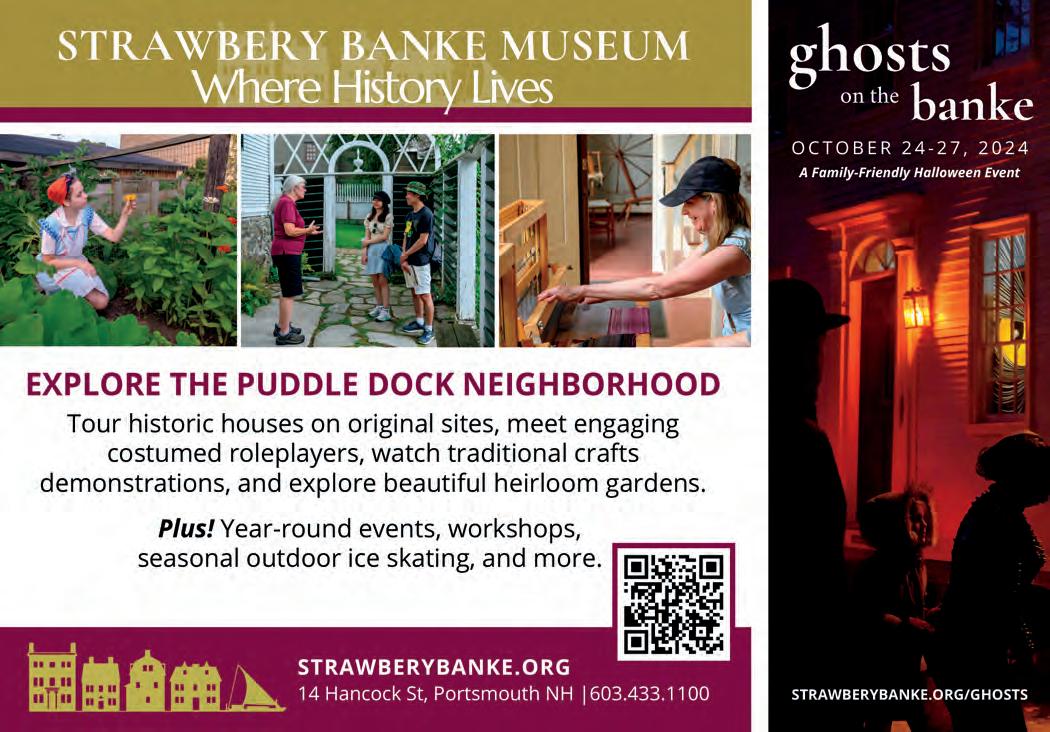
Summer’s here and gone like the blue petals on a hydrangea. Autumn does not officially begin until Sept. 22, but by Labor Day weekend, we’re already kissing the warm weather goodbye, hoping we can squeeze in another beach trip before it’s time to tear down the patio furniture. Here are some of our favorite memories from days just gone by.

James Taylor has reached the age where he cracks jokes about his senior status.
“My doctor said I might start having t rouble moving my stools,” Taylor said as he slid a small wooden one across the stage at BankNH Pavilion in July.
Taylor and his band performed two sets packed with hits, including “Fire and Rain,” “Shower the People” and “You’ve Got a Friend.” For “Steamroller,” he strapped on an electric guitar, crouched down low like a guy half his age, and traded blues licks with lead guitarist Michael Landeau.
The only people acting their age was Taylor’s audience: Twenty minutes before the band closed with a stunning a cappella performance, the Gilford crowd was leaving in waves for the parking lot.
— Mike Cote, editor
It was a full-circle moment to have not only family and friends at our Best of NH event this year, but also my new niece, Millie (perhaps a future editor in training?). It’s my first time being an auntie, outside of my not blood but basically blood niece (best friends’ babies count, too), and I’ve loved spending
this summer watching her experience New Hampshire through her eyes.
Inspired by Millie’s childlike wonder and “firsts,” I’ve also been carving out time to finally visit places I’ve written about in these pages over the years for the first time. Vegan black raspberry ice cream at Memories in Kingston. Flower delights at Fuller Gardens in North Hampton. Lavender goodies from Pumpkin Blossom Farm in Warner. I’m blessed to experience this state with each issue that we publish, but to walk it out like a reader like you is absolutely priceless.
— Emily Heidt, managing editor
The stars perfectly aligned in a stroke of luck that serves as a testimony for the travel point system. My mom and I threw our clothes into backpacks, and it was only when we were on the flight to Edinburgh that we had a moment to say “I can’t believe we’re doing this ... this is crazy!” We were on our way to see Taylor Swift.
During our swift stay, we explored like never before. We saw everything, ate haggis (and found out what it was after) and made friends with everyone we met. The
concert was incredible, and my mom said it was the best show she had ever seen. The deafening roar of the 73,000-person crowd still has my ears ringing, and we danced so hard that the British Geological Society picked up seismic activity.
Going to the Eras Tour and making incredible memories with my mom is something I could’ve only imagined in my “Wildest Dreams.”
— Elisa Gonzales Verdi, assistant editor
Traveling to live shows solo usually means I’m at the mercy of whatever vibe materializes that evening. If I’m stuck in a downpour or lost, I have to rely on the goodwill of others. My first concert this season was June 11 in Gilford with The Pixies and openers Cat Power and Modest Mouse. As I headed up the uneven grassy hill at dusk, I lost my footing, spilled my bag and toppled my drink. Like a flash, before I could finish thinking “so that’s how tonight is gonna go,” someone happily invited me to keep my drink in the cup holder on their lawn chair. New Hampshire’s music fans are the best around.
— Emily Reily, assistant editor
BY NEW HAMPSHIRE MAGAZINE STAFF / ILLUSTRATION BY JOHN R. GOODWIN

We take great pride in this achievement, though no award can compete with the honor we feel in delivering exceptional care to our communities every day. Thank you to our dedicated care teams who always help us bring you the best, where it matters most.
To learn more about our recognition in Health Equity, as well as in 11 adult procedures and conditions, visit go.d-h.org/best-hospital